
Introduction
This review article will examine the latest AMD B850 chipset motherboard from ASRock, the ASRock B850 CHALLENGER WiFi WHITE. This motherboard was released in July 2025 and adds to the sizeable collection of B850 chipset boards that ASRock offers. The CHALLENGER is a gaming-centric board, and it has a budget-friendly price tag of $189 in all white or $179 for the all black version. The design points emphasized by ASRock, in addition to the obvious all-white PCB and accents, include a 12+2 power phase, optimized aluminum heatsinks, 8-layer PCB, 2.5Gb ethernet, WiFi7, Gen5 x 16 PCIe, and Gen5 primary M.2 slots. This full ATX motherboard also supports up to 8000MT/s DDR5 memory.
In simplified terms, the AMD B850 has a single Promontory21 chipset and supports PCIe 5.0 (Gen5) to the NVMe, with graphics support of PCIe 5.0 being an optional feature; otherwise, it supports PCIe 4.0 (Gen4) graphics. It also supports up to USB 3.2 20Gbps natively, but lacks the USB4 mandatory spec of the AMD X870/E chipsets. Motherboards based on this class of chipset still support CPU and memory overclocking, however, for full enthusiast tweaking options. AMD has a great chipset comparison chart available for reference.
The challenge, no pun intended, it seems, comes in trying to fit this motherboard into an already crowded and feature-rich ASRock B850 line-up. The all-white color scheme may help with that, as does the current price tag, which we stated at $189. This motherboard is warranted by ASRock for 3 years.
Packaging and Contents
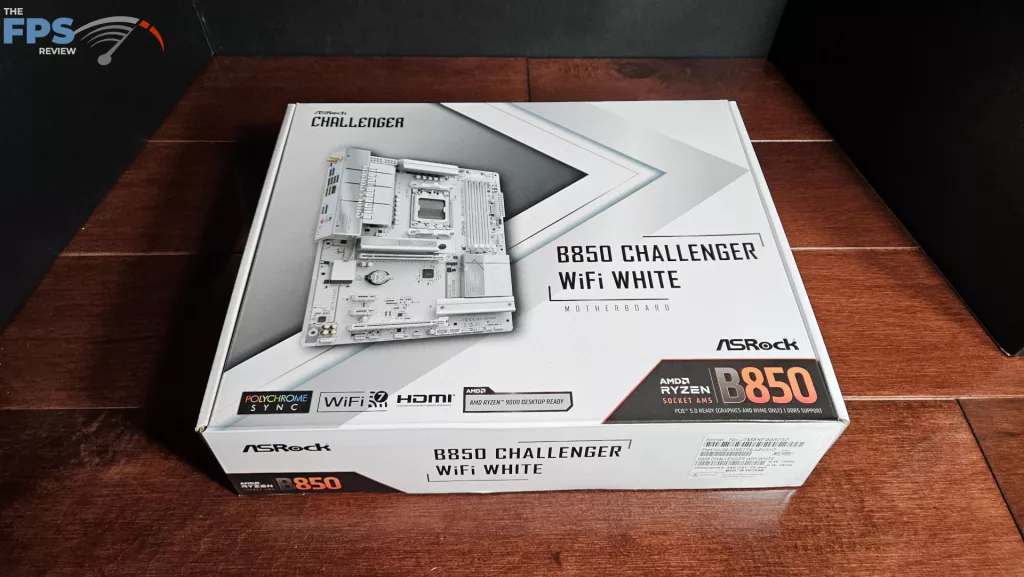
The motherboard was received directly from ASRock. This is the standard full retail box that we have seen in all the current ASRock motherboard releases. The board was placed in an anti-static bag and cushioned with cardboard inserts. The contents other than the motherboard are spartan: a “Quick-Start” booklet, two all-white SATA cables, a case badge, and a sticker sheet. In addition, in a separate box were two all-white screw-in WiFi antennas.
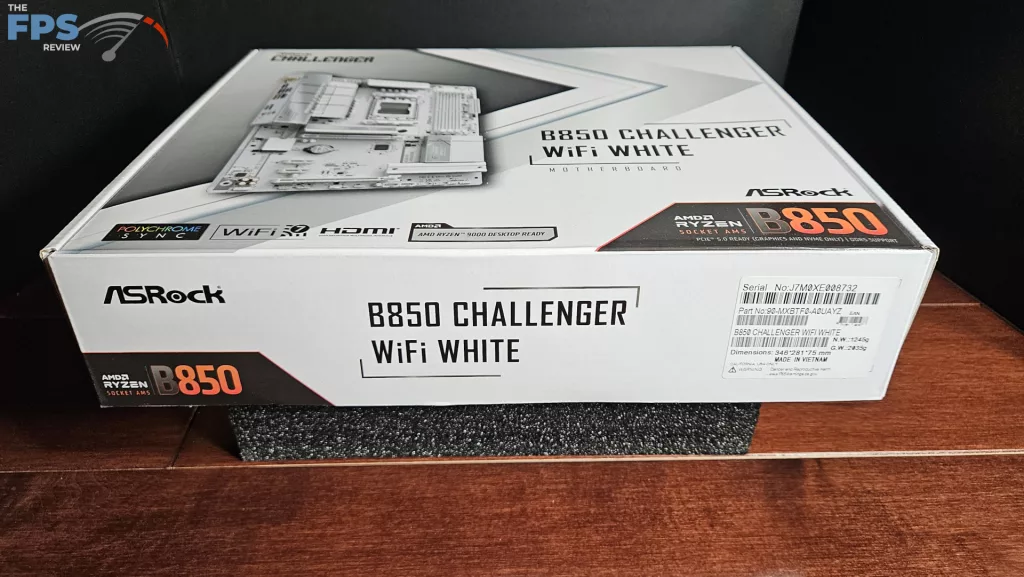
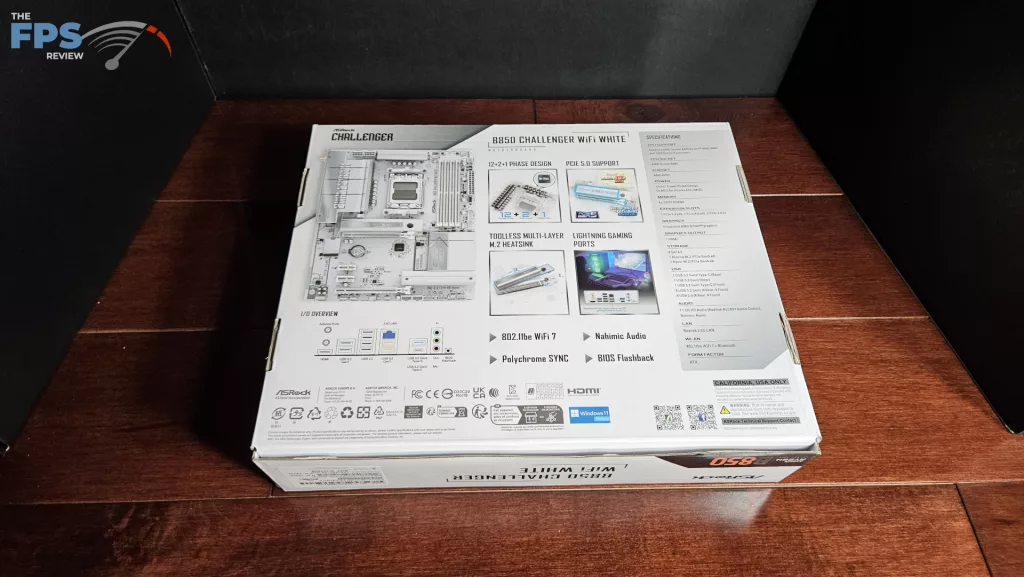
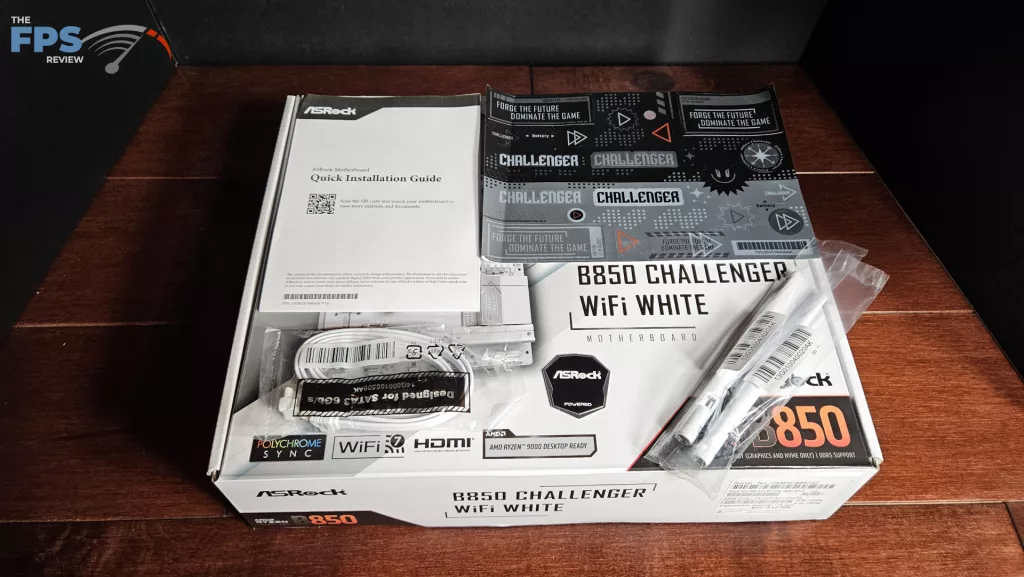
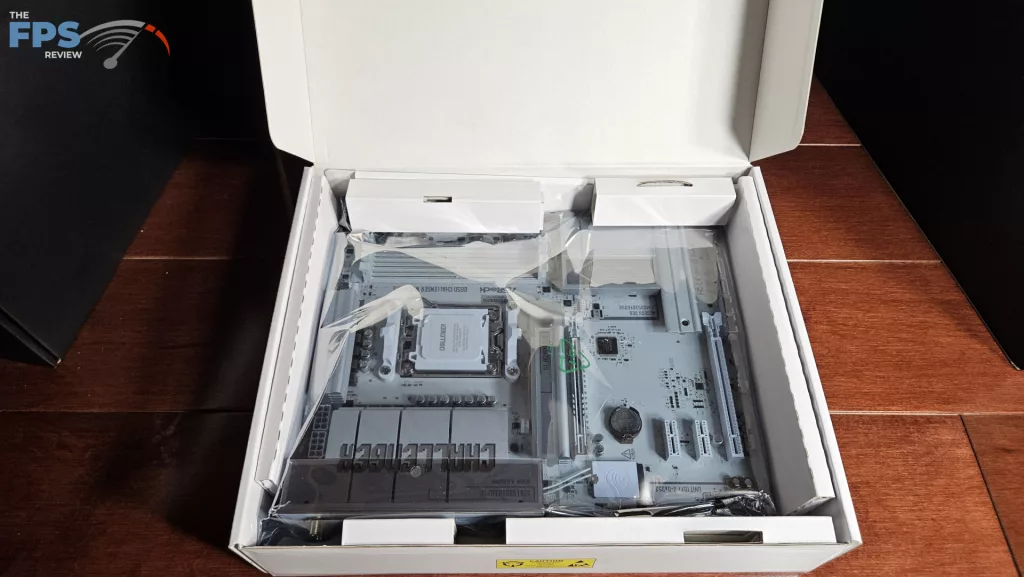
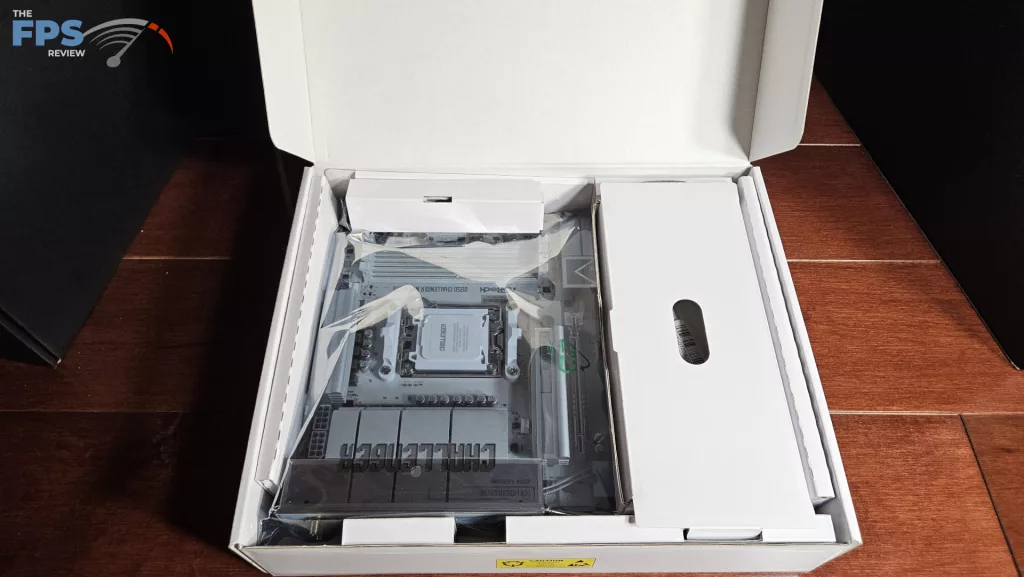
ASRock B850 CHALLENGER WiFi WHITE Features
The ASRock B850 CHALLENGER WiFi WHITE is a full-sized ATX motherboard. ASRock features this board as primarily a gaming-centric board. The all-white aesthetic is the stand-out feature. Every component is white with minimal exceptions. Strangely, the heatsinks are silver-gray. There are no RGB components on this motherboard; however, there are three ARGB headers and a single 12V LED header. The board is well constructed with no bends or flex. The heatsinks are powder-coated aluminum and also give the board a sturdy feel. ASRock has placed a set of De-Bug LEDs in the upper right corner of the board, but no on-board digital readouts or power button.
There are only two M.2 slots on this motherboard. The primary M.2 is Gen5 x 4 speed while the lone secondary slot is Gen4 x 4. The M.2 heatsinks do have thermal pads in place on the removable portion. The primary slot also has a thermal pad mounted on the bottom contact surface. It has an EZ-Latch button release, while the secondary is held in place with small screws (which, unfortunately, are not embedded). Both M.2 slots have rotating fasteners for the free end of the NVME.
While the primary PCIe slot is metal reinforced, it has no EZ-Release latching mechanism, sadly. In addition, there are two PCIe x 1 slots and a full-sized PCIe x 4 slot.
The rear I/O has 9 USB-A slots and one USB-C slot. In addition to 4 USB 2.0 ports, there are four USB Gen3.1 5Gb, one USB Gen3.2 10Gb, and the lone USB C 10Gb port. Two of the 5Gb ports are ASRock “Lightning Gaming” low-latency ports (colored yellow). WiFi is AzureWave WiFi7, while the Ethernet is RealTek Dragon 8125BG at 2.5Gb/s. Audio is supplied by a RealTek ALC 897 and is 7.1 channel capable.
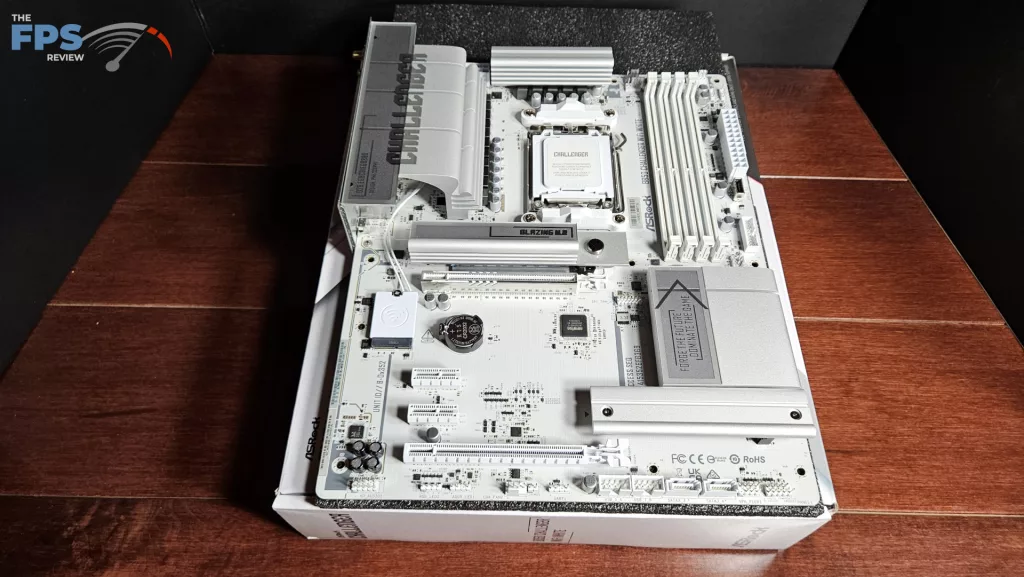
Power Delivery
This motherboard uses a 12+2+1 Smart Power Phase setup with Dr.Mos. We could not find the total amperage available for the VCore. This power setup is in the middle of all the offerings from ASRock in the B850 chipset and should handle overclocking adequately. The dual 8-pin CPU power connectors are in the standard location. VRM heatsinks are heavy, powder-coated aluminum. There are no heatpipes. The PCB is an 8-layer design and overall is quite sturdy without any flex or bending.
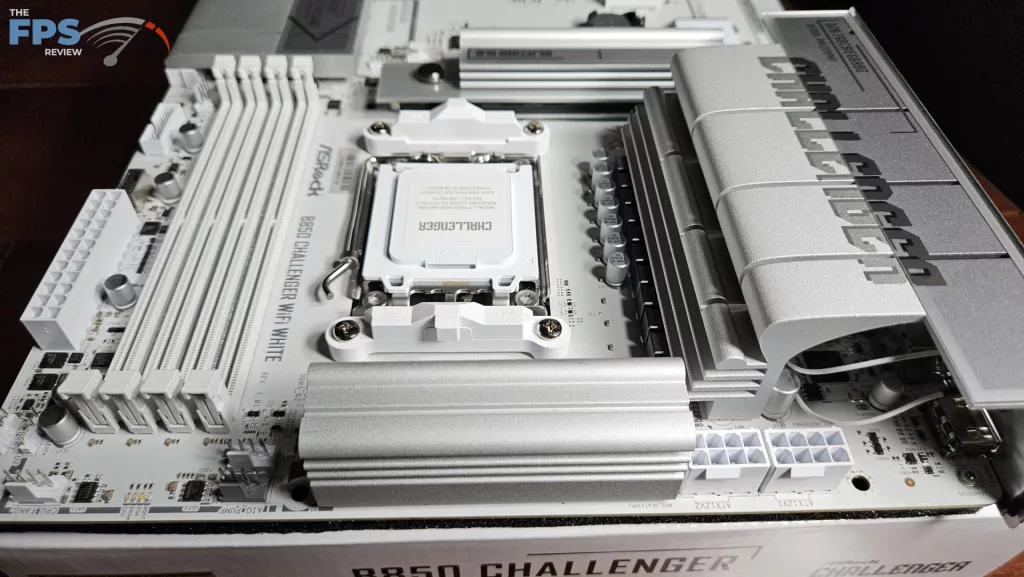
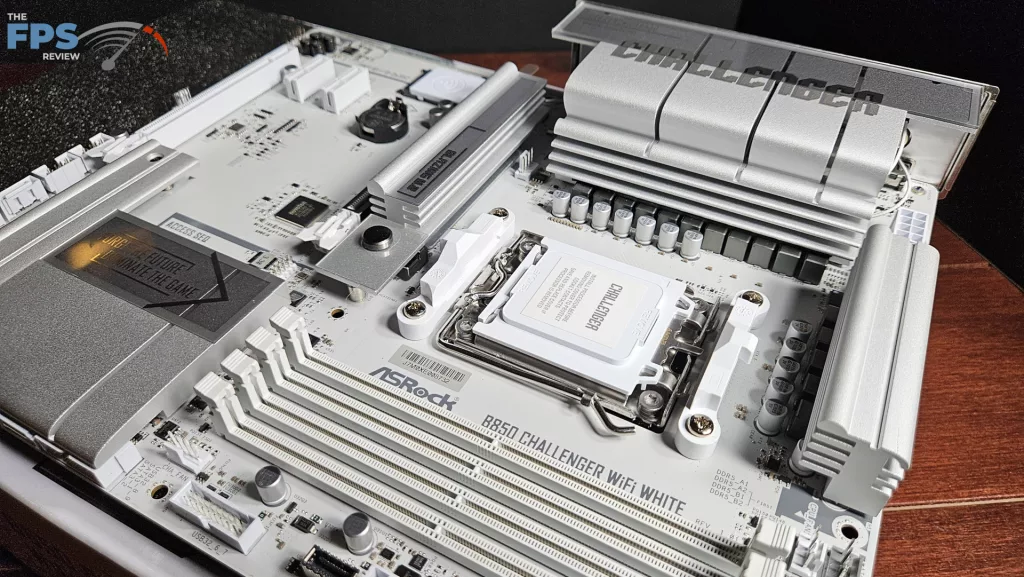
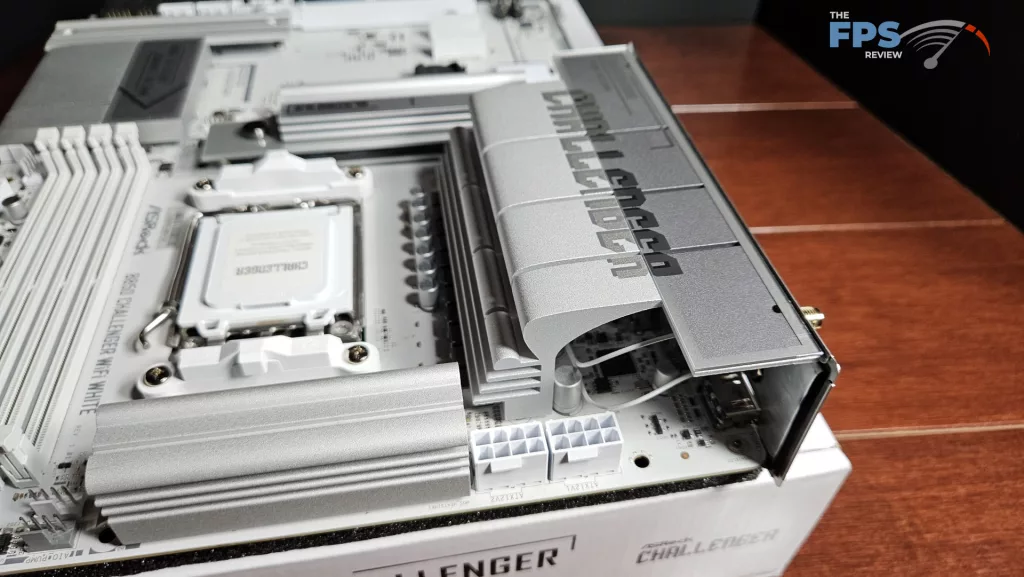
CPU Socket, Memory, and Storage
The ASRock CHALLENGER B850 WiFi WHITE supports socket AM5 CPUs in the Ryzen 7000, 8000, and 9000 series. There is ample space surrounding the socket to place most, if not all, CPU coolers. Our MSI AIO MAG Core 360I gave us no mounting issues. Memory supported includes DDR5 DIMMs up to 256 GB in total. Frequencies are advertised up to 8000MT/s (OC). XMP and Expo profiles are supported for 1-click overclocking. The memory slots are double-latched. The spacing seems adequate for large CPU coolers. The only issue here may be tall DIMM heatsinks in slot A1 and low cooling fins on an air-cooled heatsink.
There are only two M.2 slots on this board. M.2_1 supports Gen5 SSDs (Blazing, 128Gb/s M.2) while the lone secondary slot, M.2_2, supports Gen4 (Hyper, 64Gb/s M.2). The placement of M.2_2 is very well thought out. The slot is placed offset to the right and below the chipset heatsink. This should reduce any interference from a large 3 or 4-slot GPU. There are also 4 6Gb/s SATA ports available, two right-angle on the right edge and two standard on the bottom row of the board.
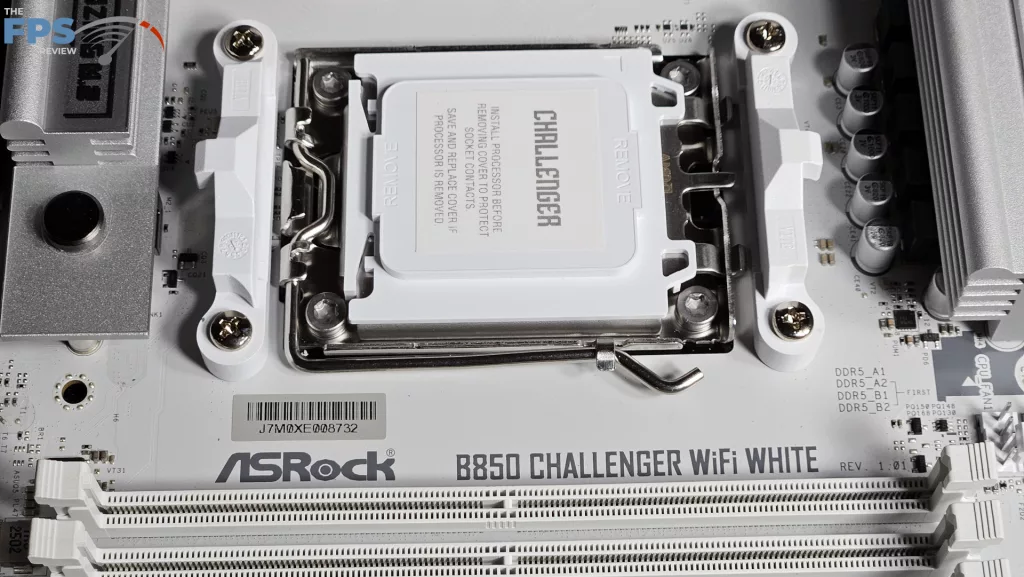
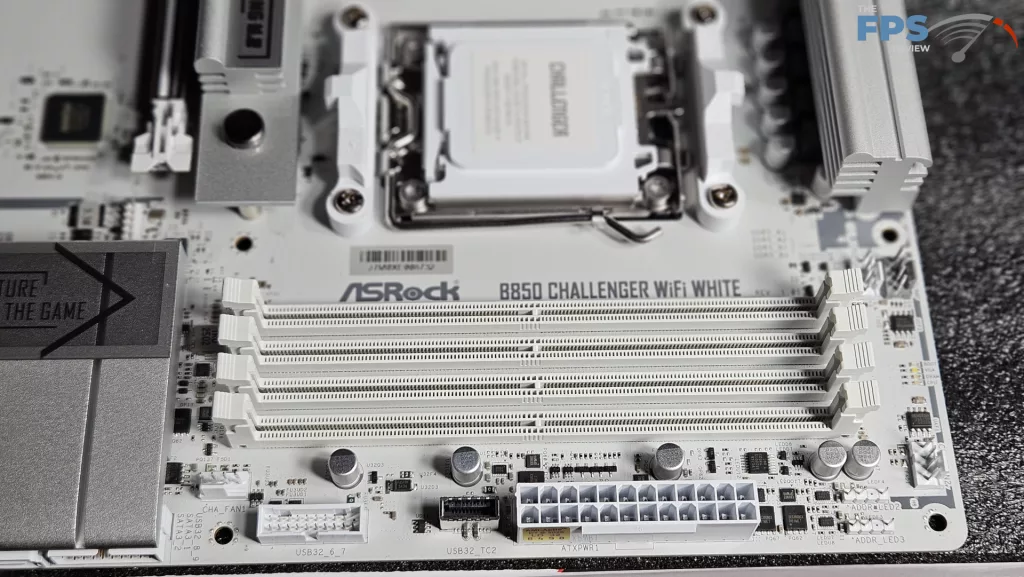
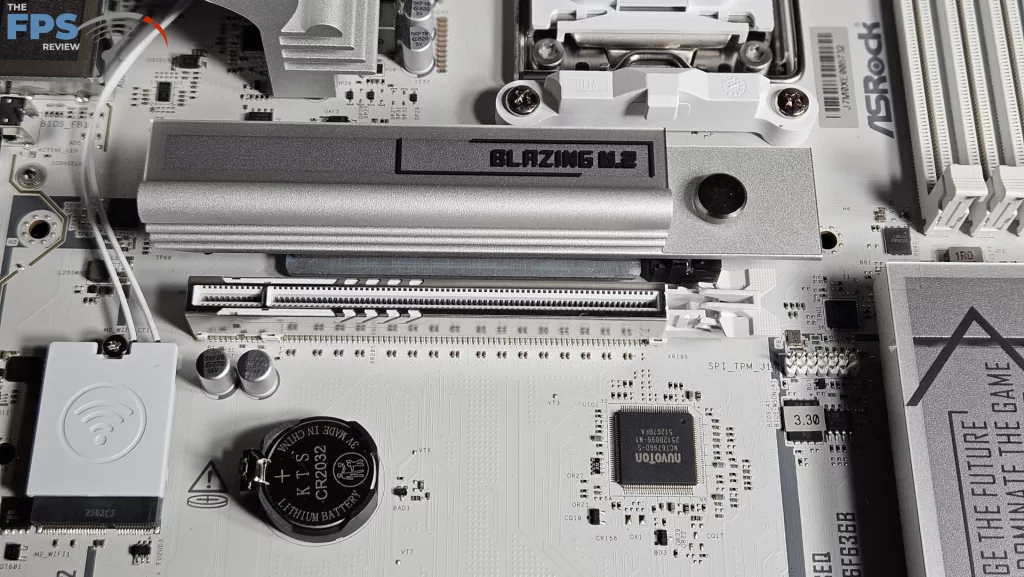
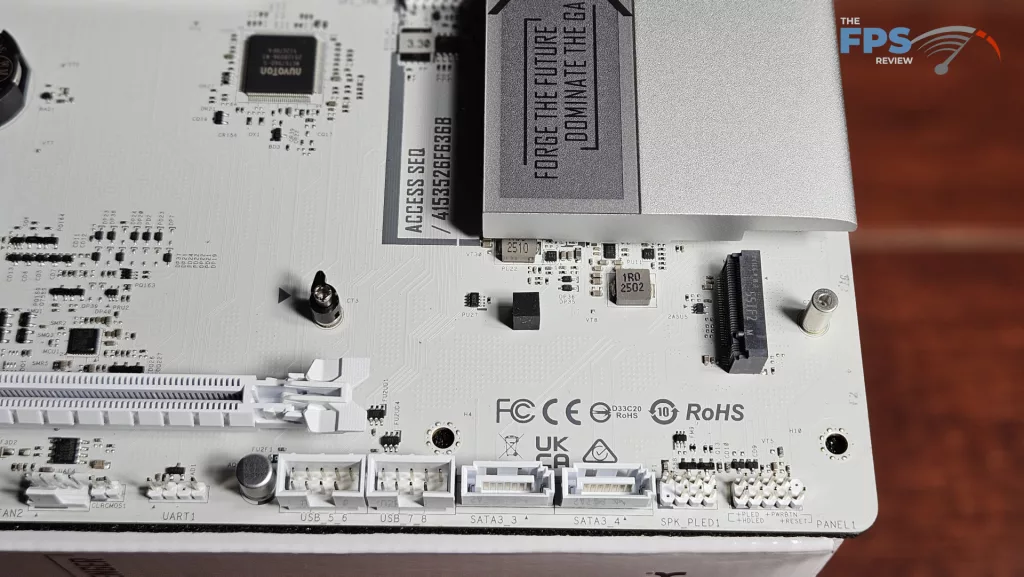
Expansion
Expansion slots on the ASRock B850 CHALLENGER WiFi WHITE consist of one Gen5 x 16 PCIe, two Gen3PCIe x 1, and one Gen4PCIe x 4. While the primary PCIe slot is metal reinforced, sadly, it has no type of EZ latch release. The space available to release a GPU between the M.2_1 heatsink and the top of the GPU is…..well…..challenging for your fingers. The primary PCIe and the PCIe x 4 lanes are supplied by the CPU, while the two PCIe x 1 slots are supplied from the Prom21 chipset. As we discussed above, the placement of the second M.2 slot does make it much more useful if you happen to install a big GPU.
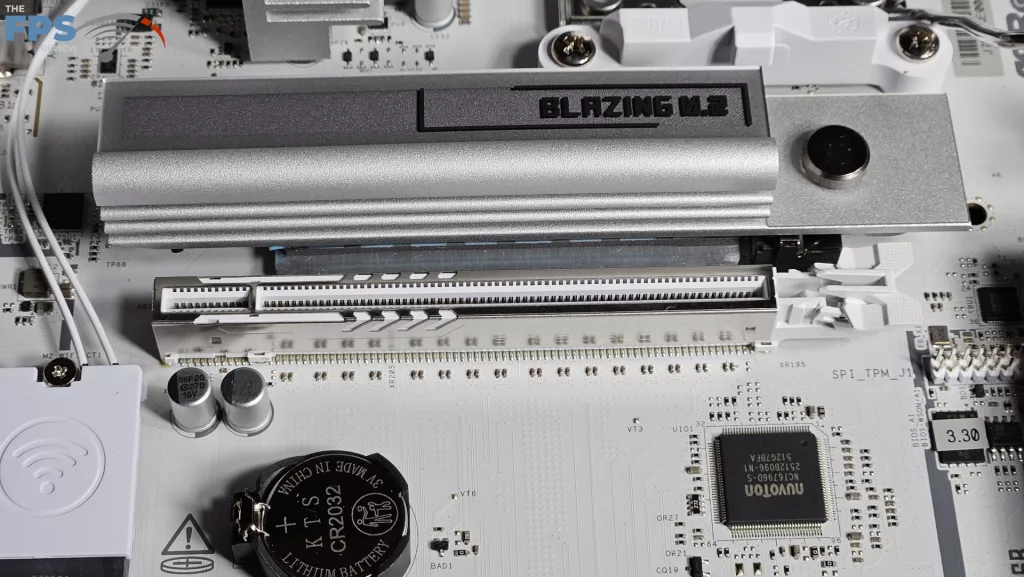
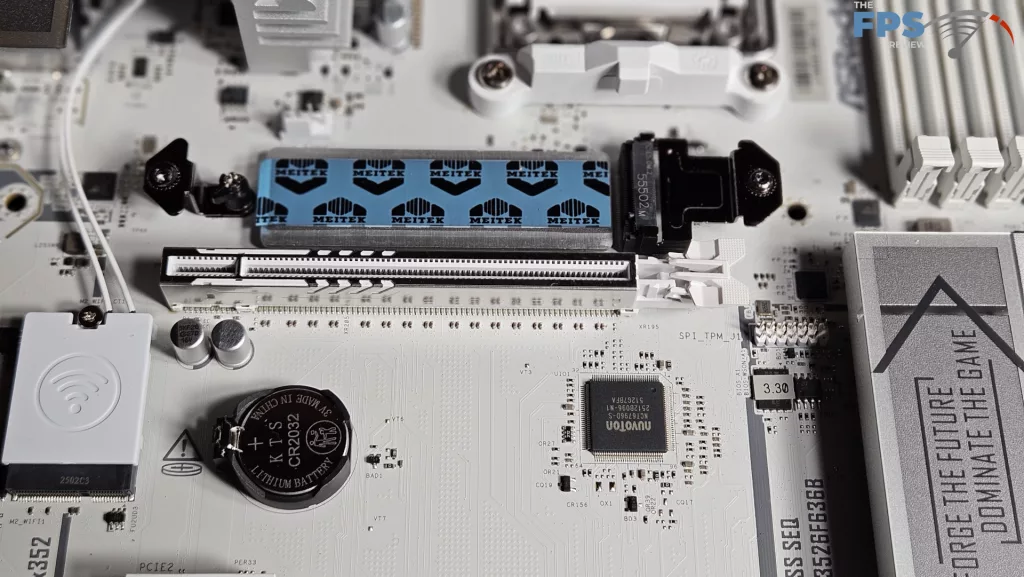
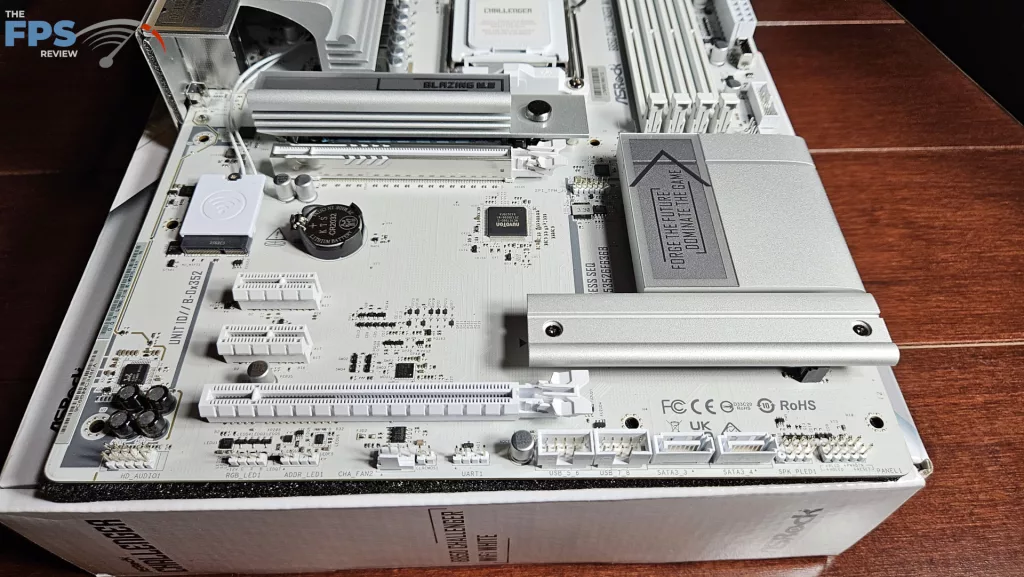
I/O
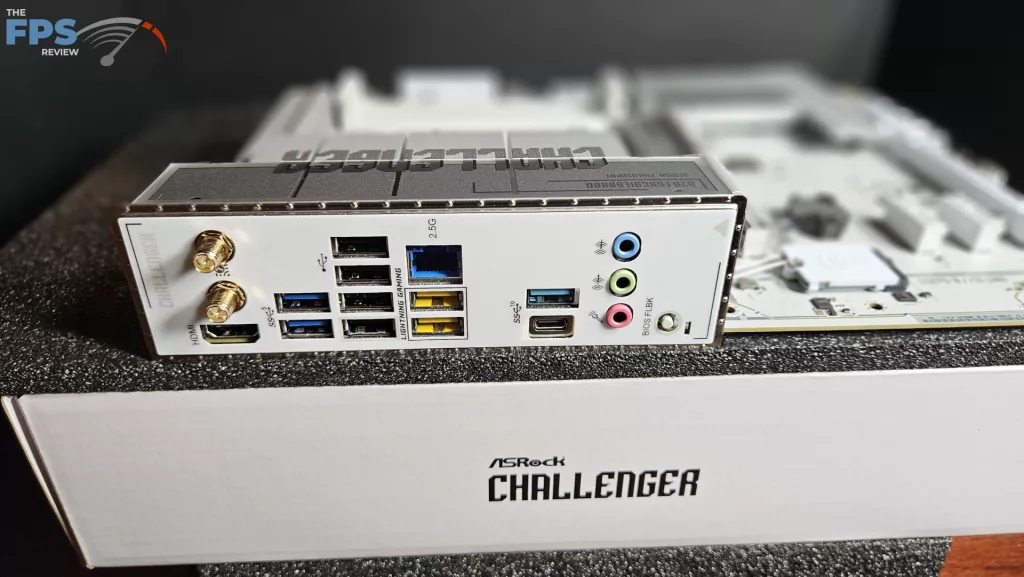
The I/O panel on the ASRock B850 CHALLENGER WiFi WHITE is fairly well supplied. First off, the motherboard plate is embedded, which seems to be the standard at this point, but still nice. Working from left to right: WiFi antenna ports and HDMI, two USB-A 5Gb, four USB-A 2.0, 2.5Gb/s ethernet RJ-45 and two yellow “Lightning Gaming” 5Gb USB-A, one USB-A 10Gb and one USB-C 10Gb, 3.5mm microphone and audio jacks, and finally the BIOS Flashback button.
On the main board, there are a total of 6 four-pin fan headers. On the top row, one AIO and two CPU, on the right side, botto,m and left side one each. All six headers can be controlled by “Fantastic” located in the BIOS. On the right side of the board at the top edge are two ARGB headers. Also, we have one USB-C 5Gb/s front panel header and two USB-A Gen3.1 5Gb/s headers. Two right-angle SATA ports are the last ports on the right side. On the bottom row, we see the front panel header, two SATA ports, two USB 2.0 headers, a fan header, and finally the front panel HD audio header. Also, there is an additional ARGB header and a 12V LED header in case you have to have some RGBs. As always, all the RGB headers are controlled by ASRock Polychrome SYNC software.
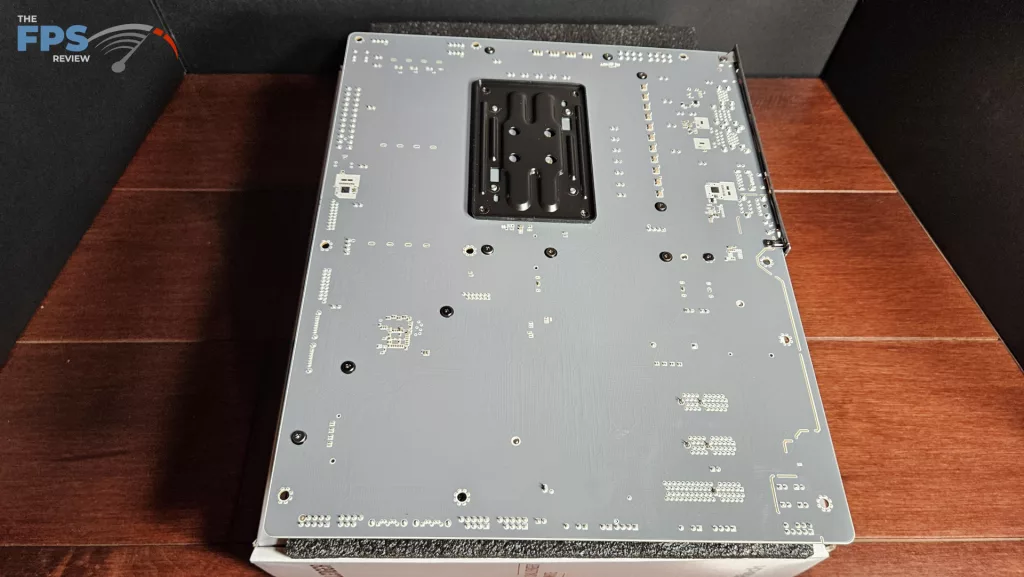
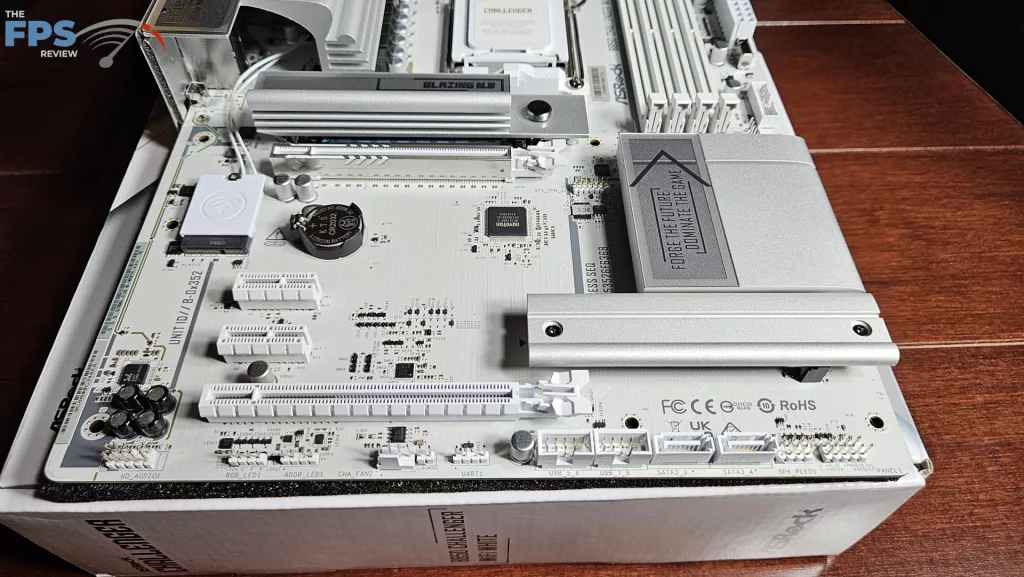
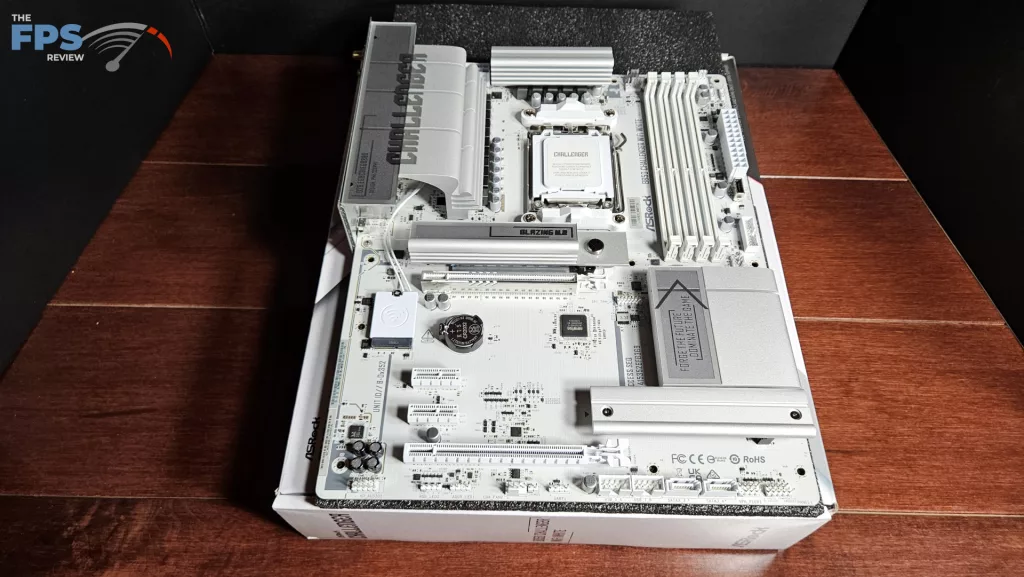
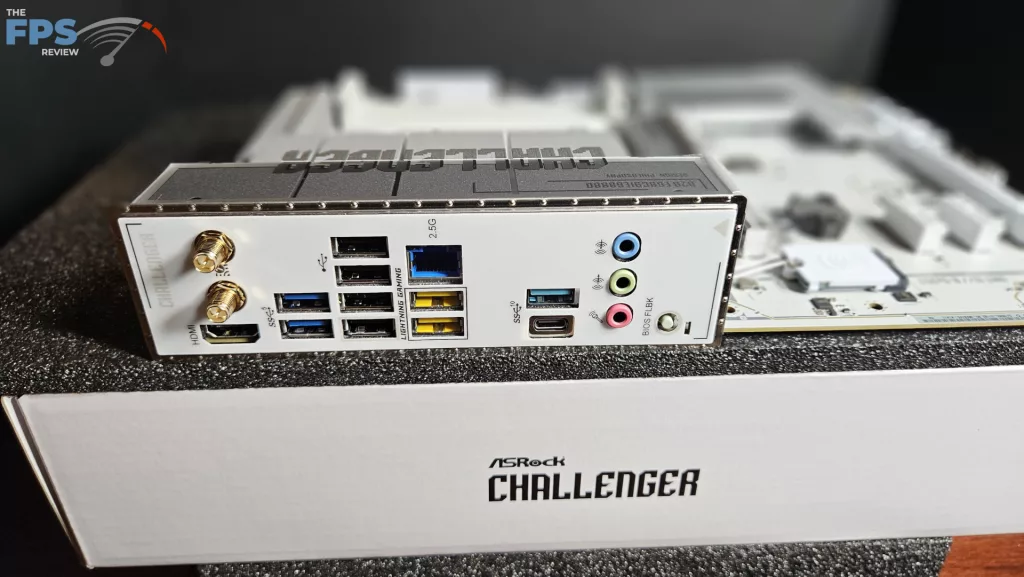
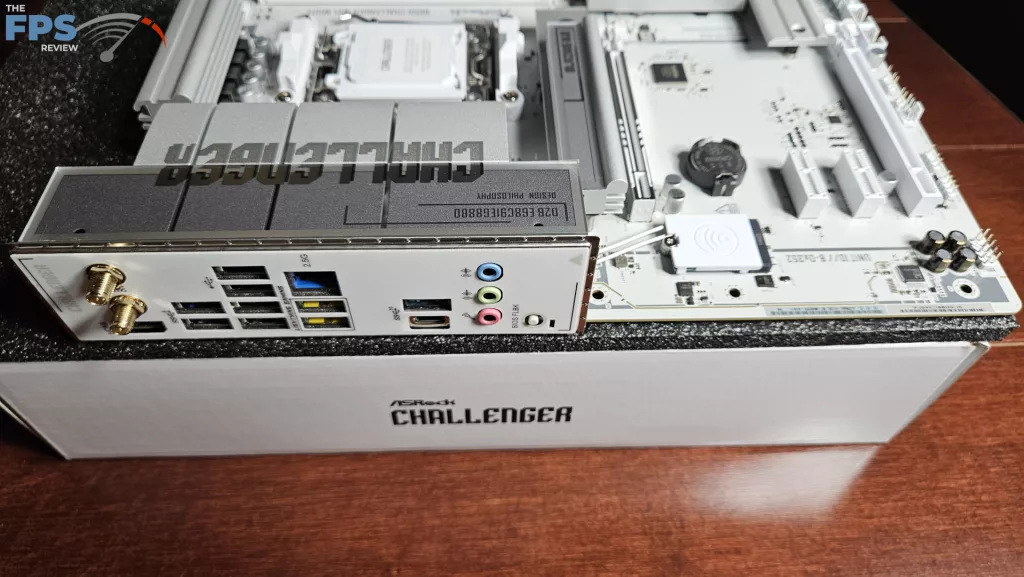

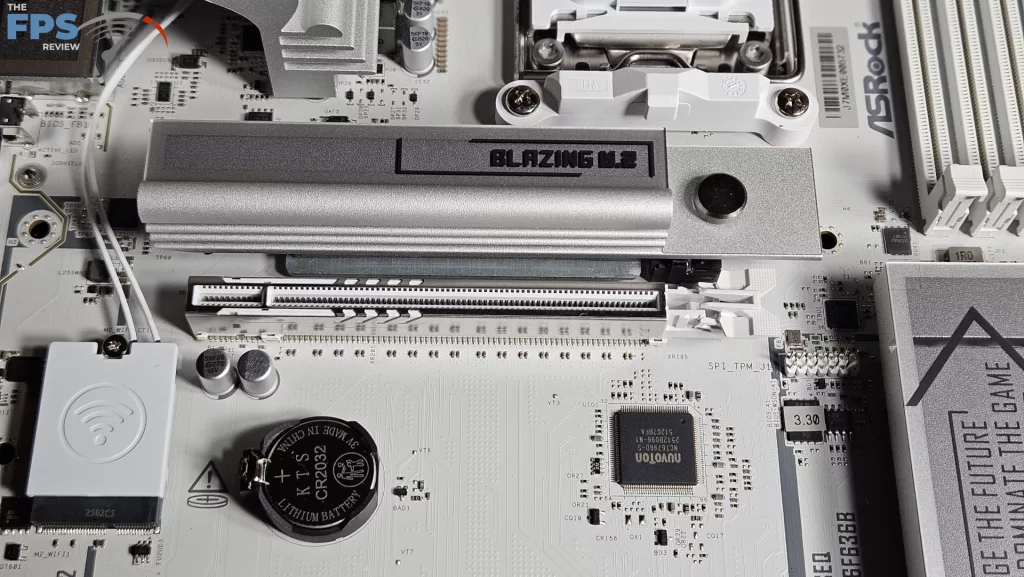
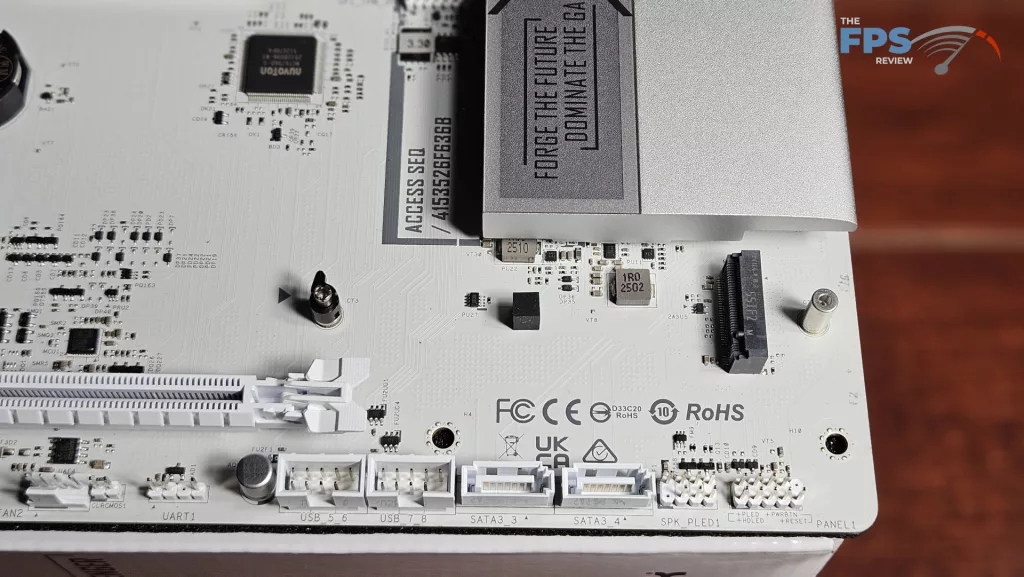
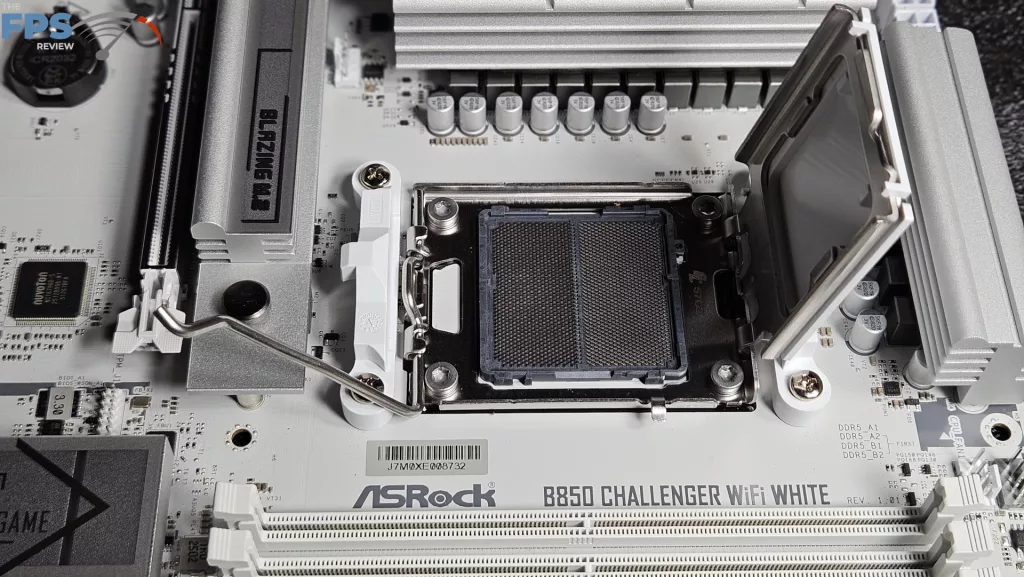
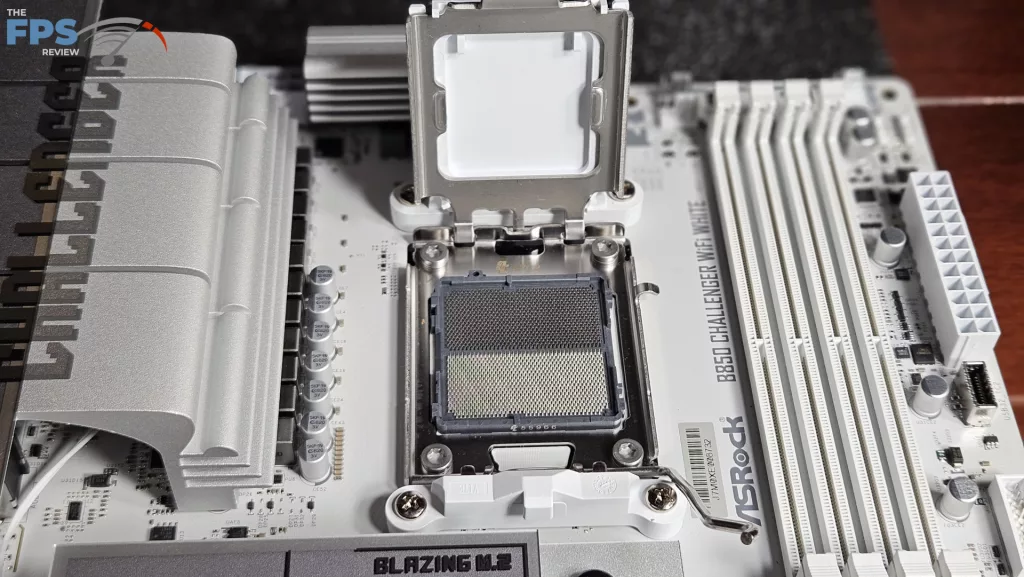
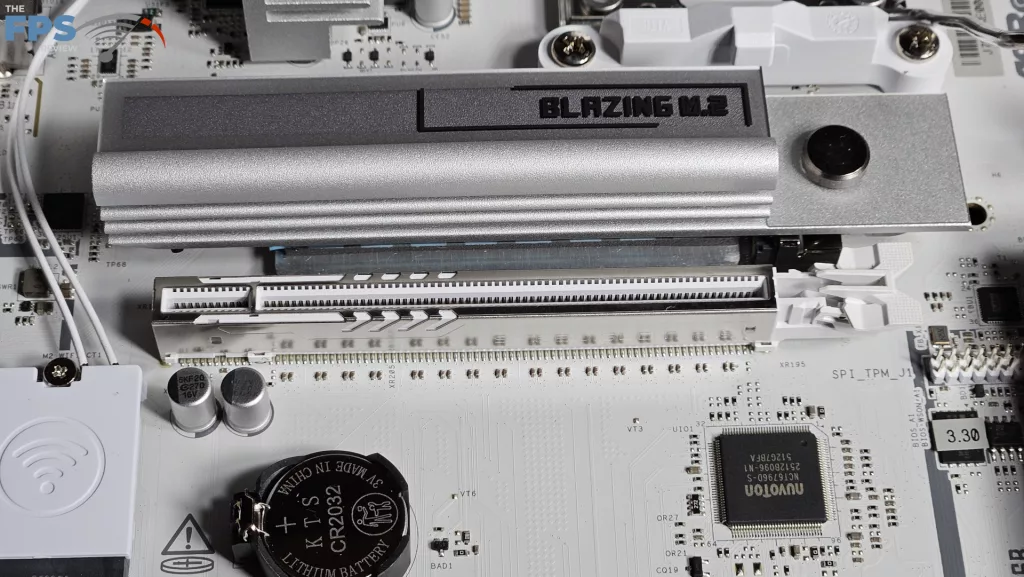
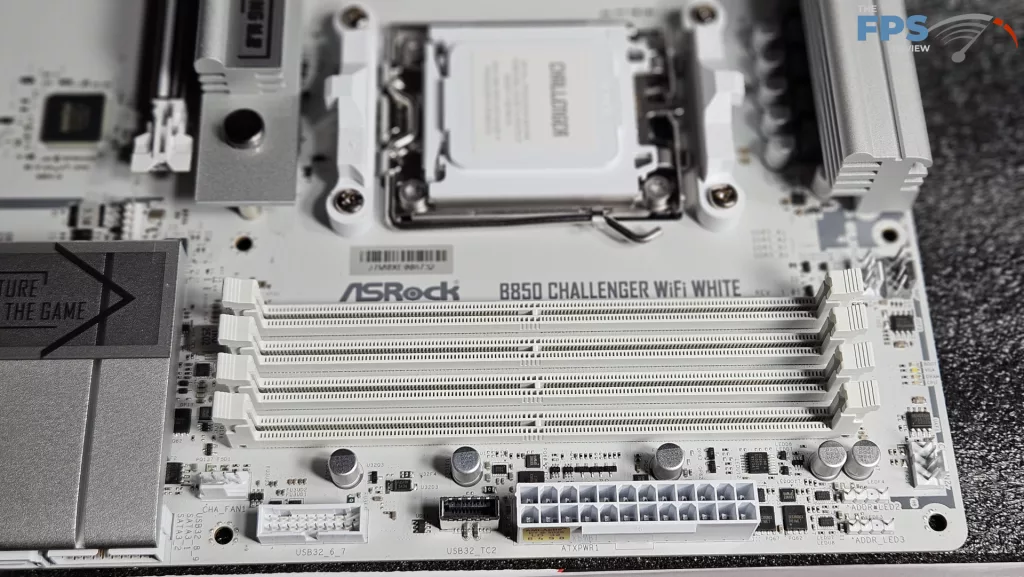
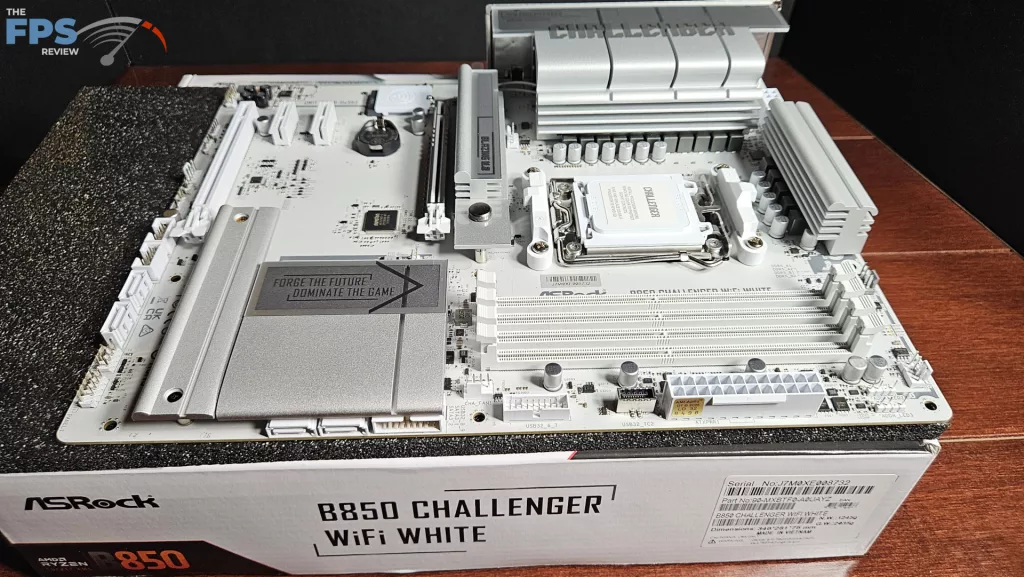
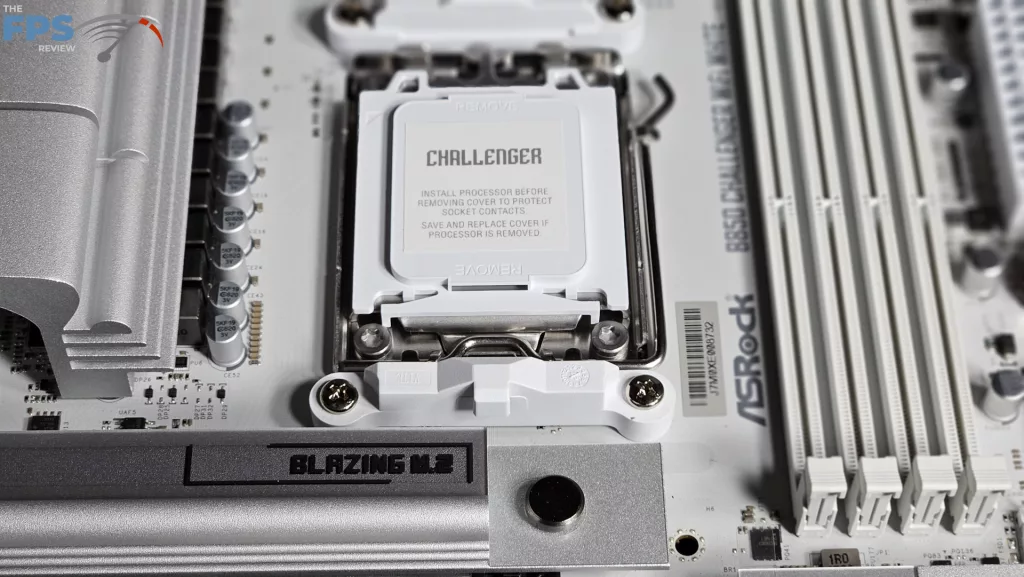
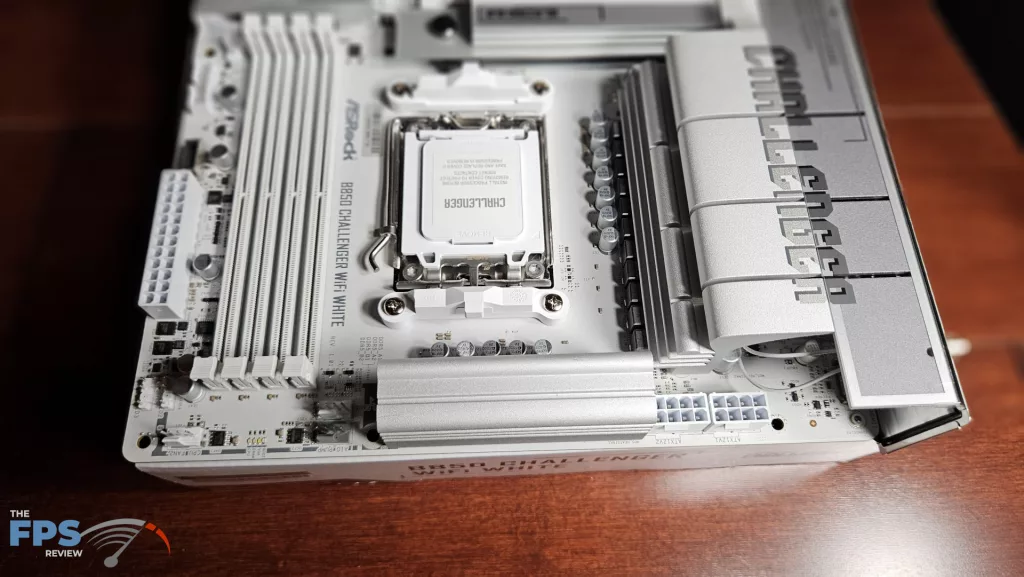
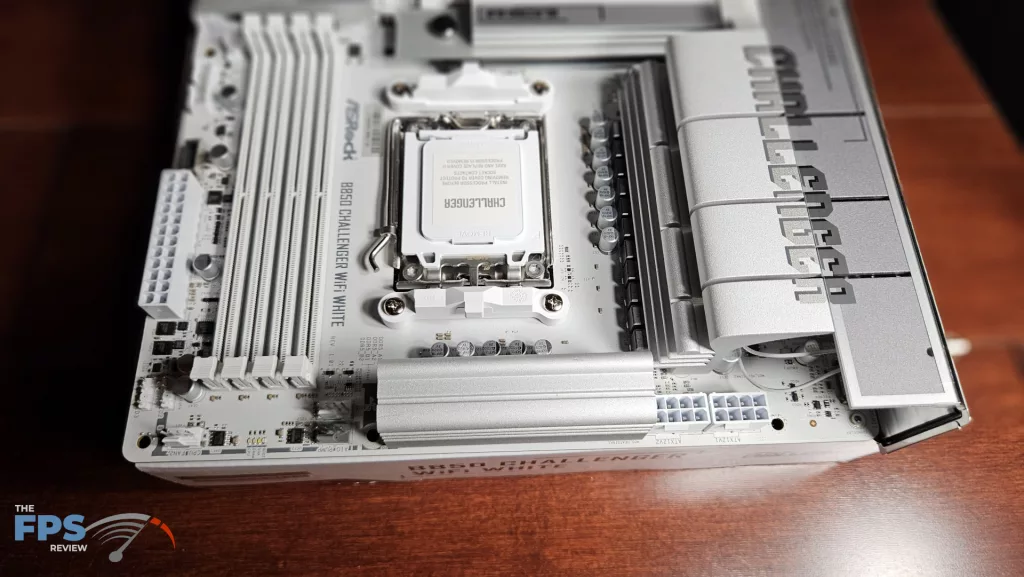
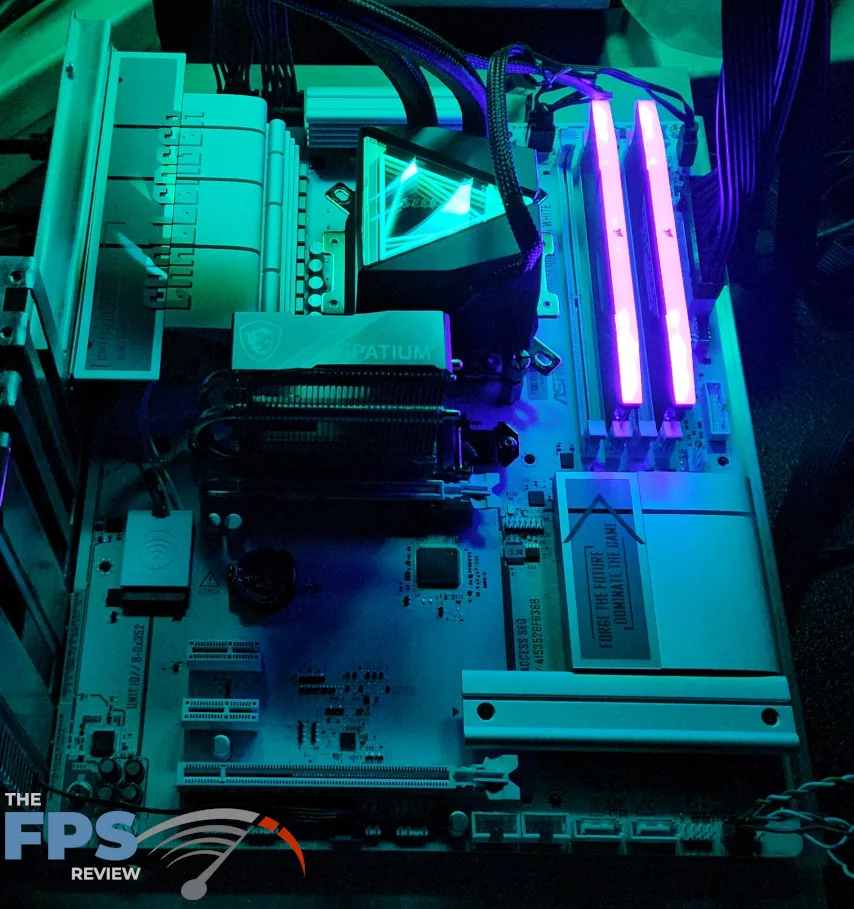
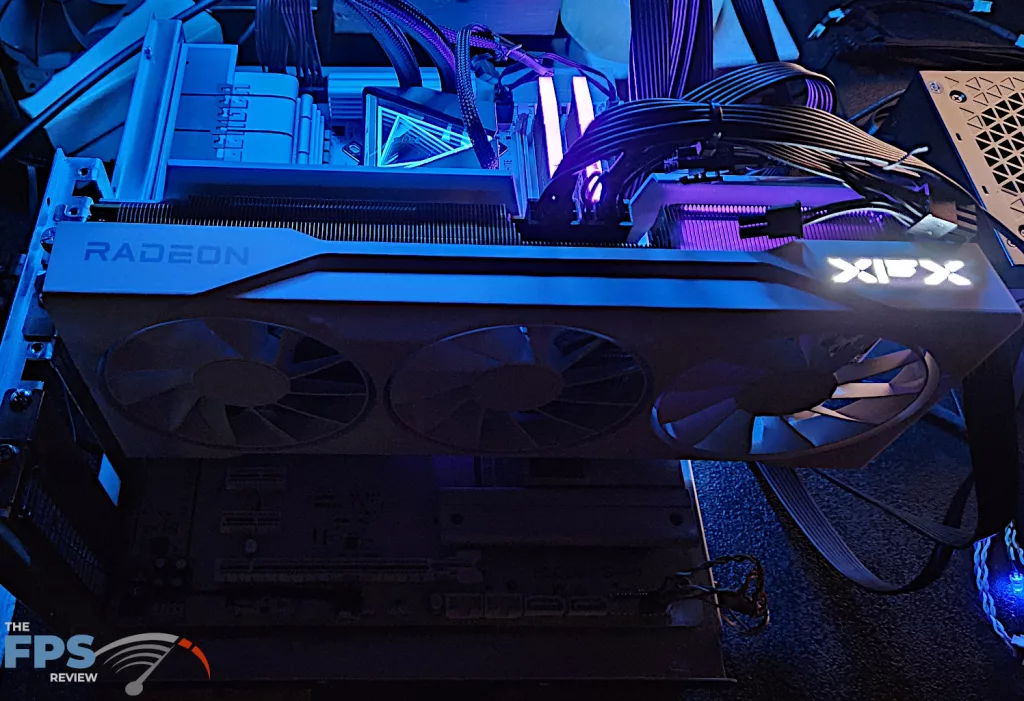
UEFI/BIOS
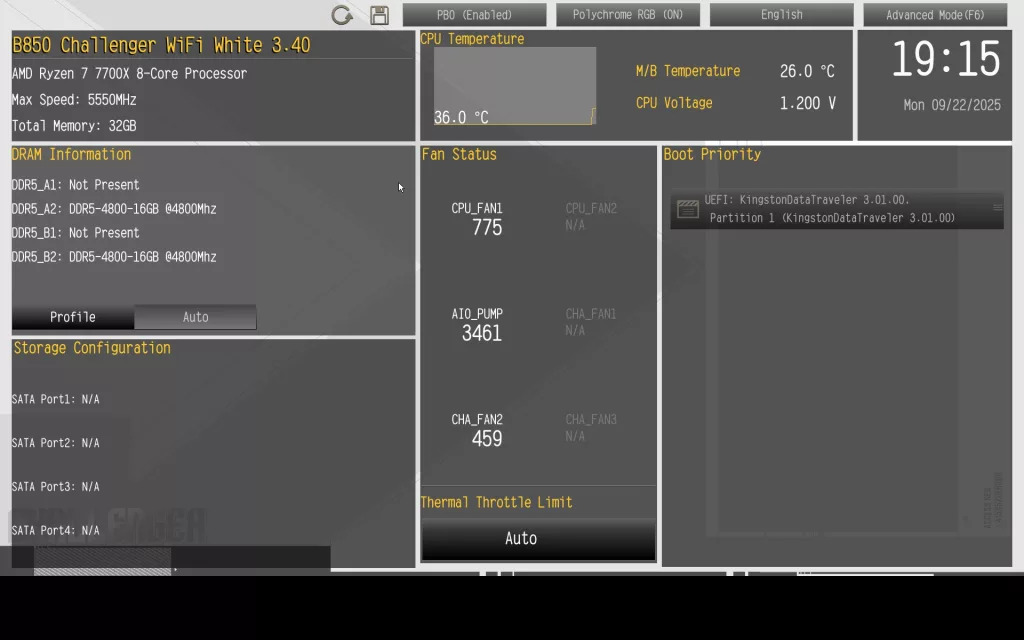
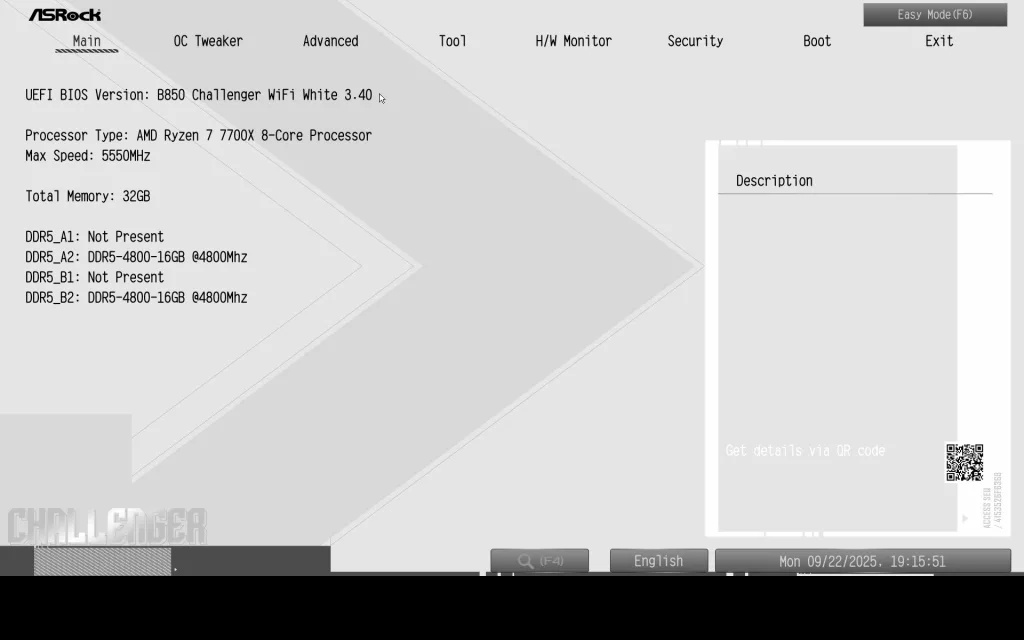
The ASRock B850 CHALLENGER WiFi WHITE uses a standard UEFI/BIOS, an American Megatrend AMI UEFI. Entering the BIOS is quite easy from the logo screen on boot. The BIOS enters the main screen for “Easy mode” by default. There are “Advanced” and “Easy” modes to choose from. The Easy Mode is a single screen that gives basic information as well as the options to select RAM overclocking profiles, enable PBO, and set Boot priority. Boot priority is simply a drag and drop, which is nice and easy to use. Hitting F6 will take you to Advanced Mode, which is where OC Tweaker and Advanced submenus reside, as well as the Tool menu and Hardware Monitoring/Fantastic menus.
Recall that the B850 motherboards have both manual and automatic overclocking settings for the CPU and RAM. This allows for quite a bit of tinkering if that is what you enjoy. Quite honestly, if you look at any of our ASRock B850 motherboard reviews, you will see the BIOS is essentially identical across all the boards.
Our ASRock B850 CHALLENGER WiFi WHITE came to us with the 3.40 BIOS version installed. This is dated 27 AUG 25 and is the most up-to-date BIOS available for the motherboard. ASRock has two ways to flash the BIOS, and both are quite straightforward. We have used both in the past without problem. “Instant Flash” is a software tool available in the BIOS under the “Tools” menu. The other method is the “BIOS Flashback” button on the I/O panel. This method only requires that you have your motherboard attached to the 24-pin connector on the PSU and a USB drive plugged in with your unzipped desired BIOS version on it. Whichever method you employ, the BIOS is updated unremarkably.
We found working within the UEFI was well organized. Navigation was very straightforward. The main sections were all well labeled, and the submenus were categorized to be easy to find. The layout was very smooth to navigate, and selections could mostly be made with a single mouse click.
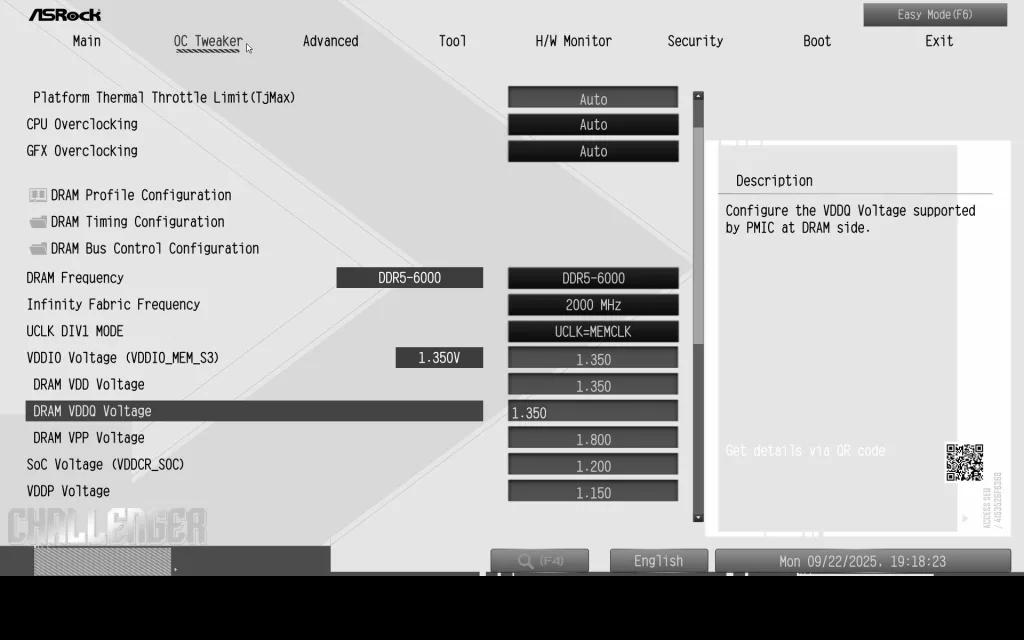
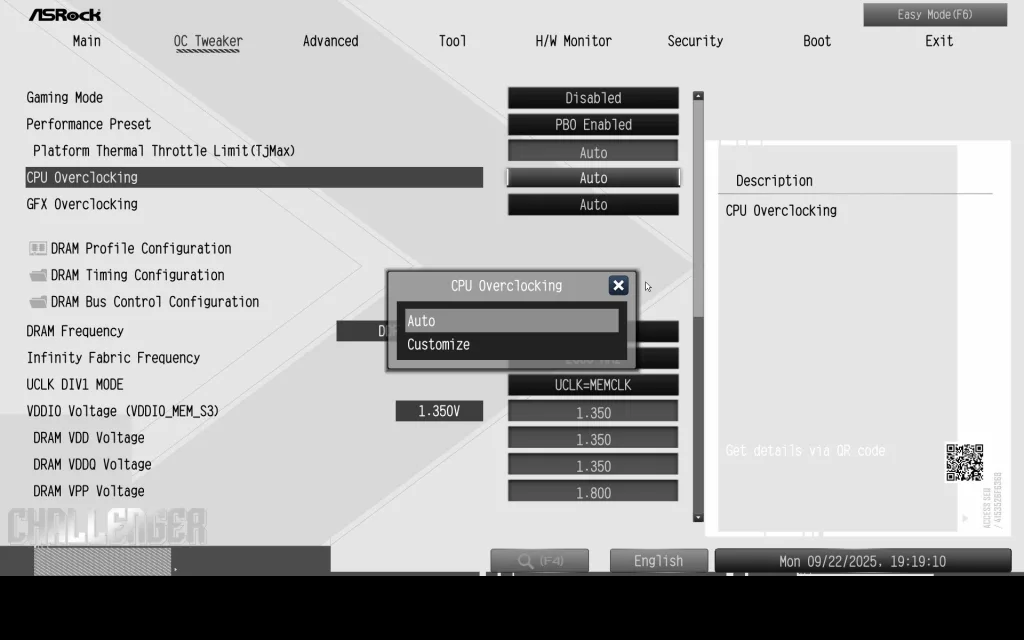
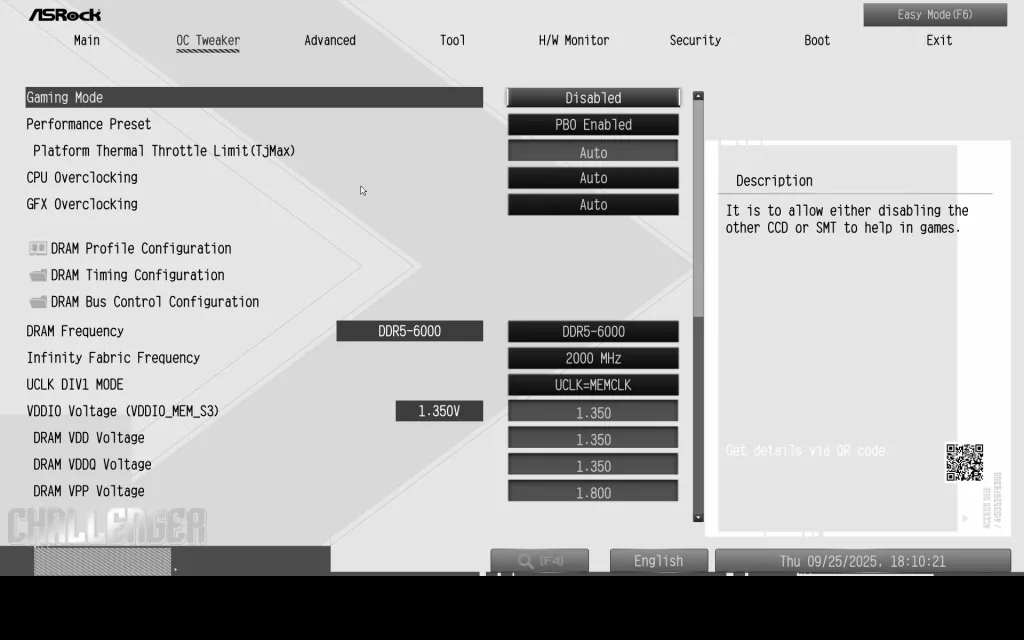
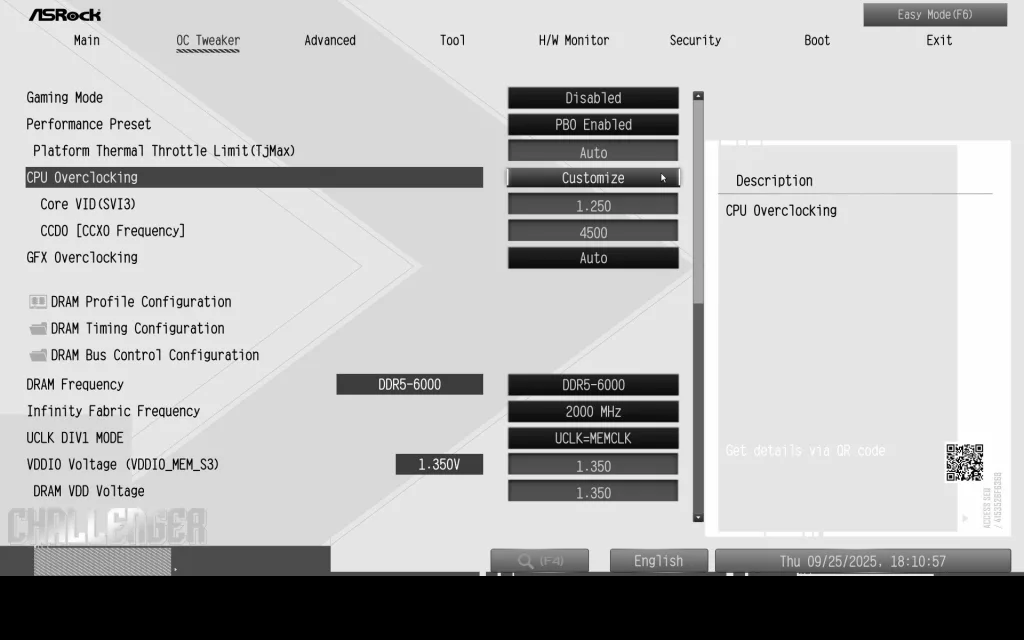
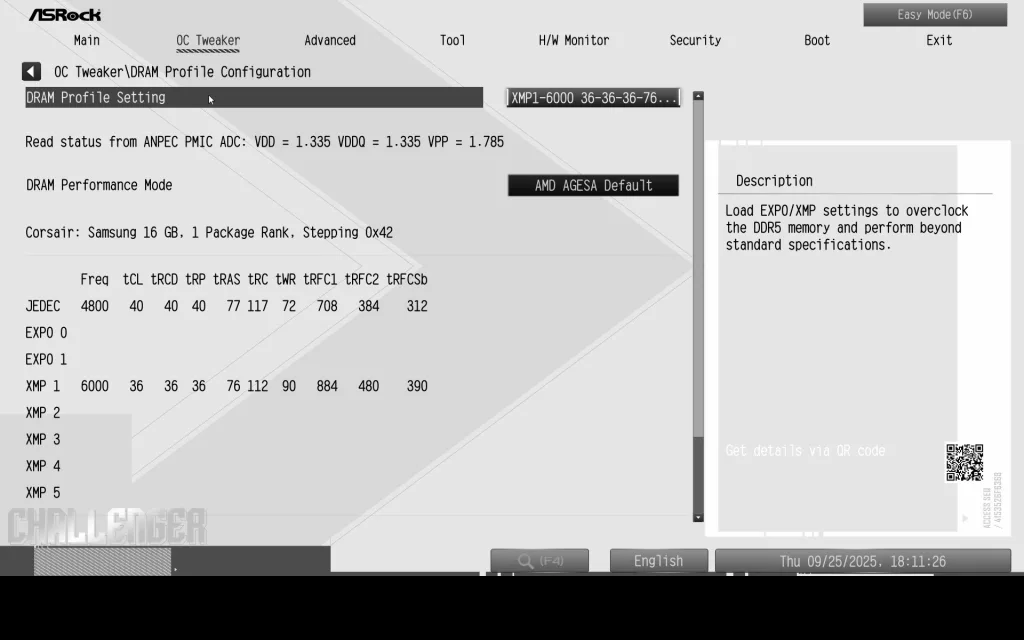
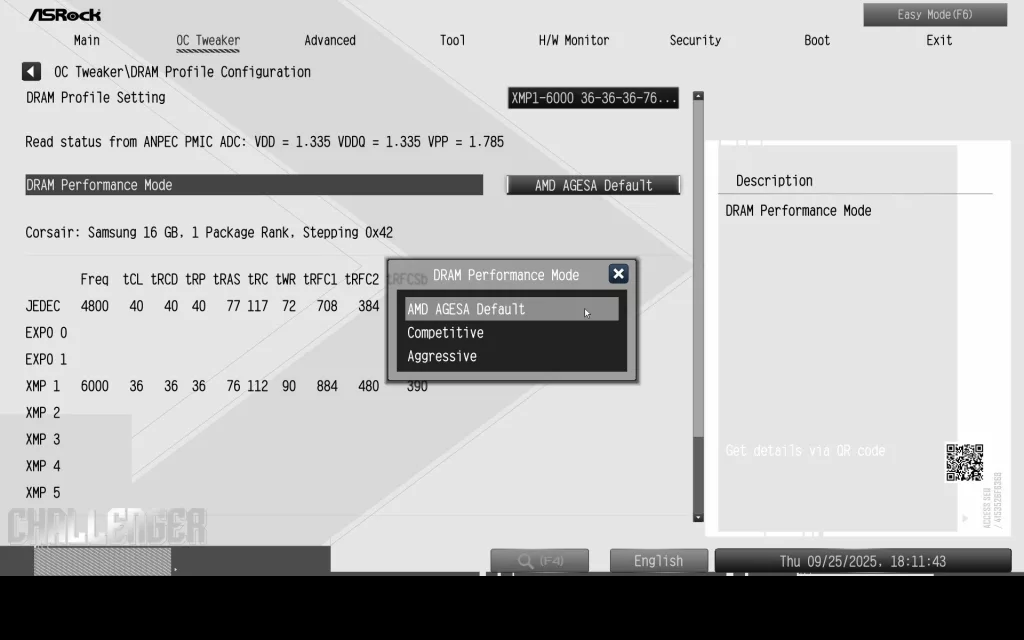
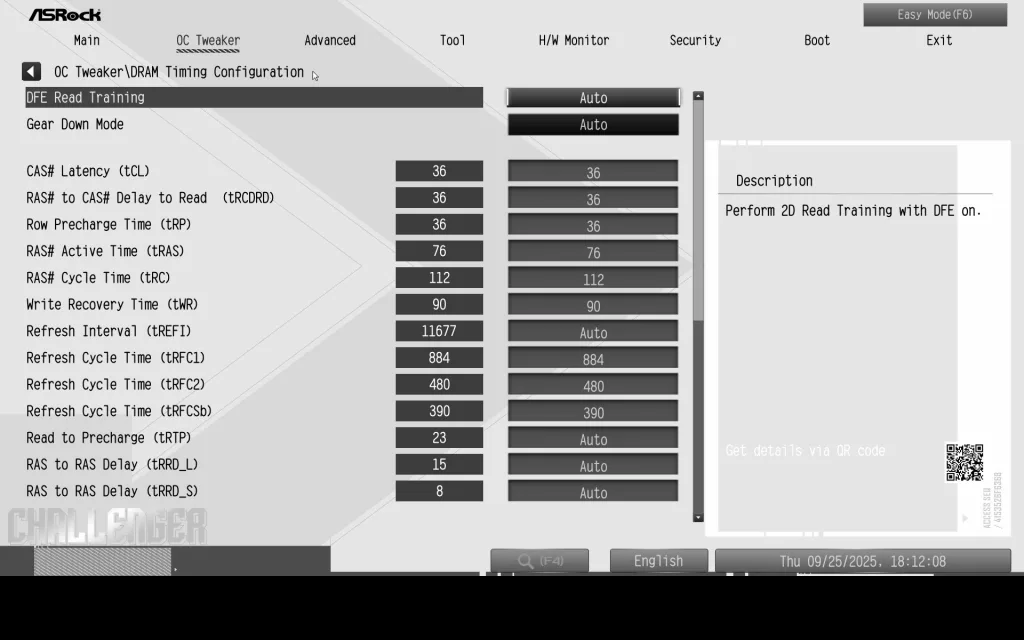
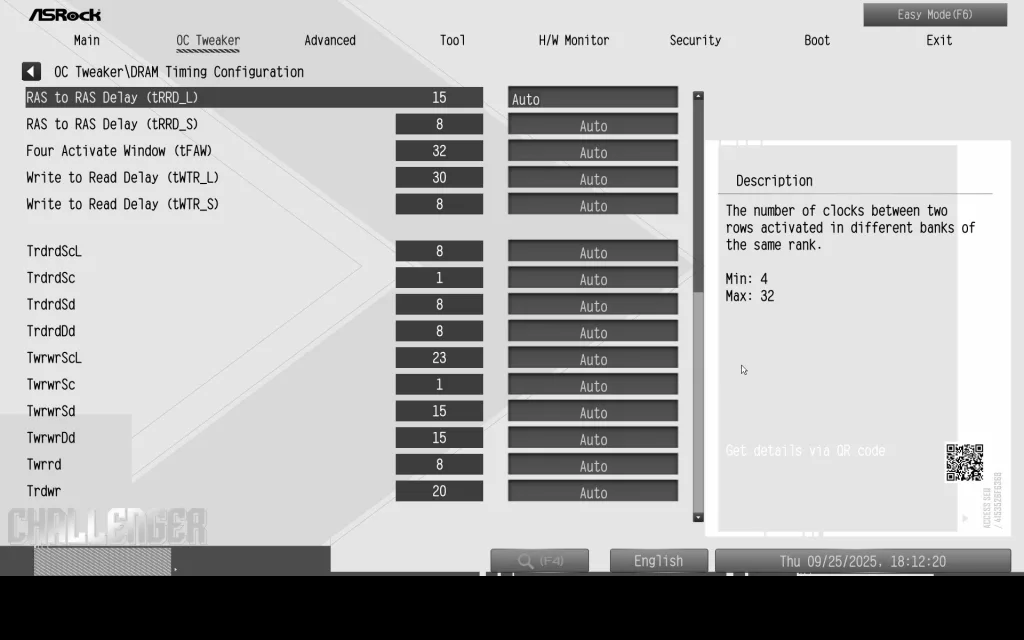
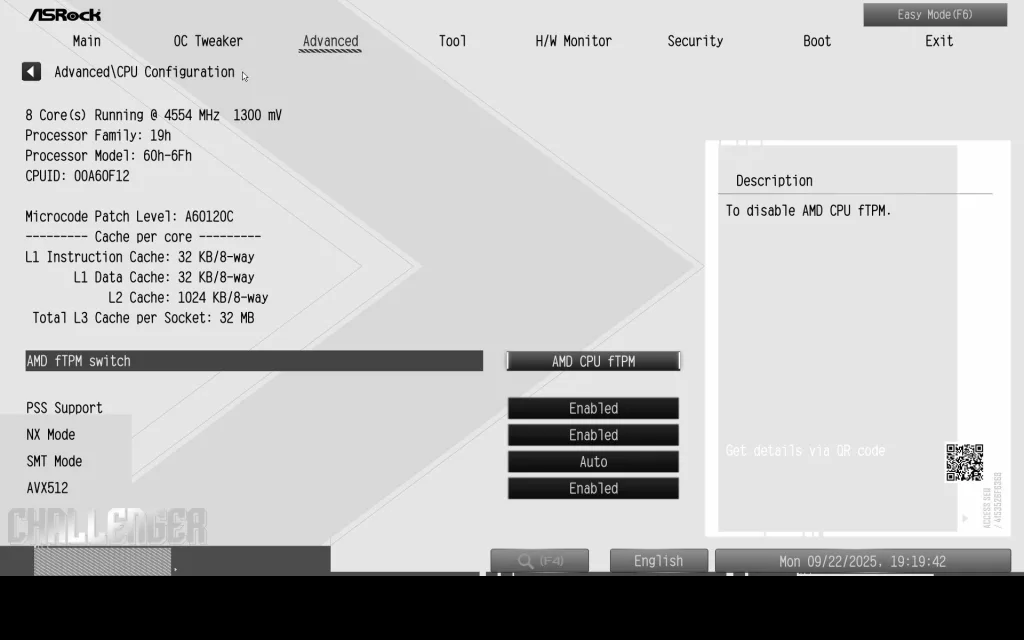
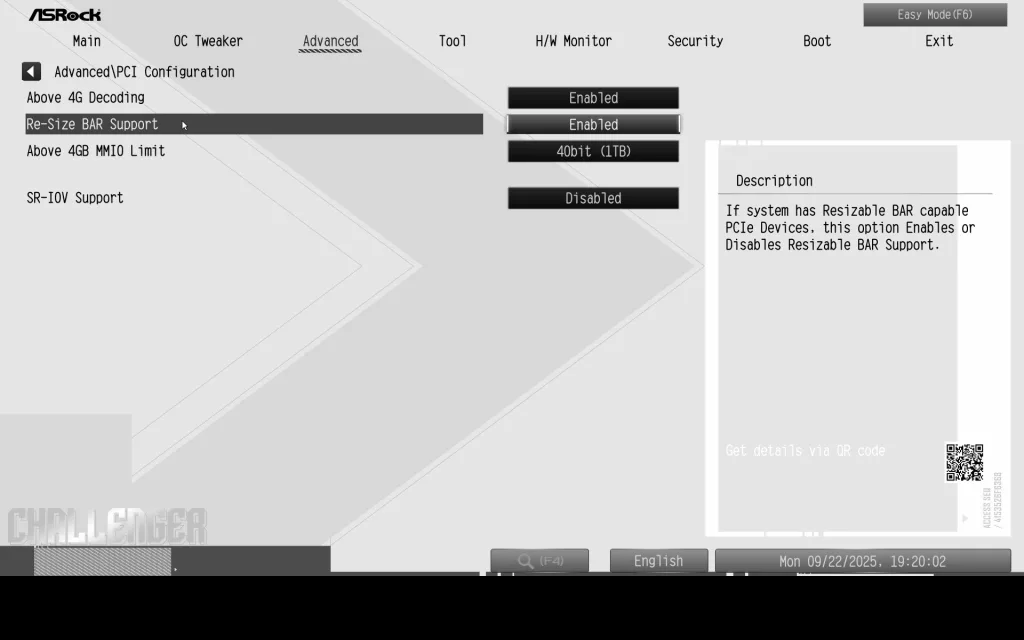
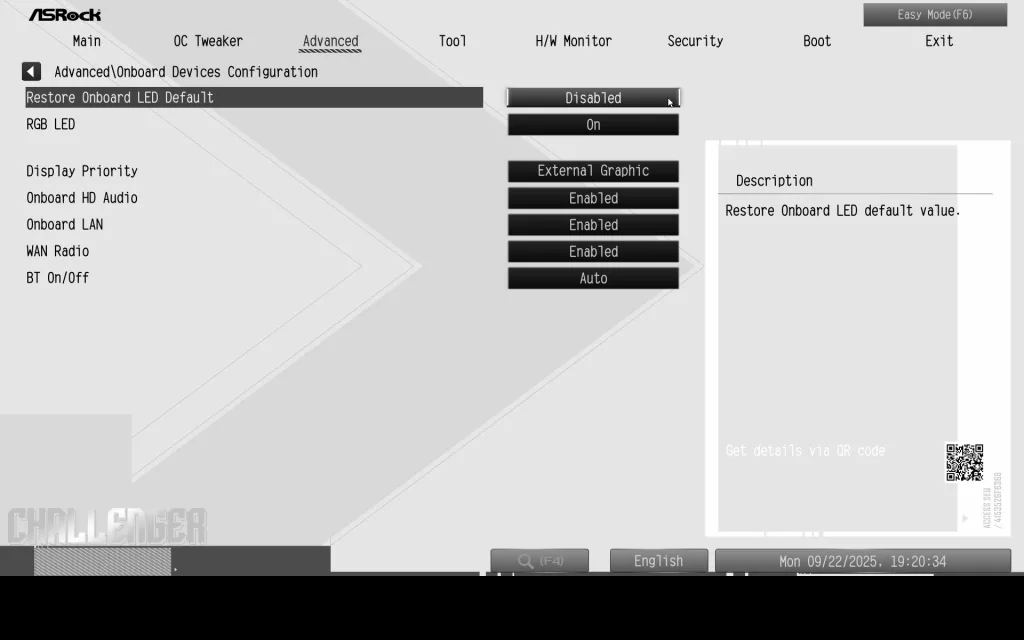
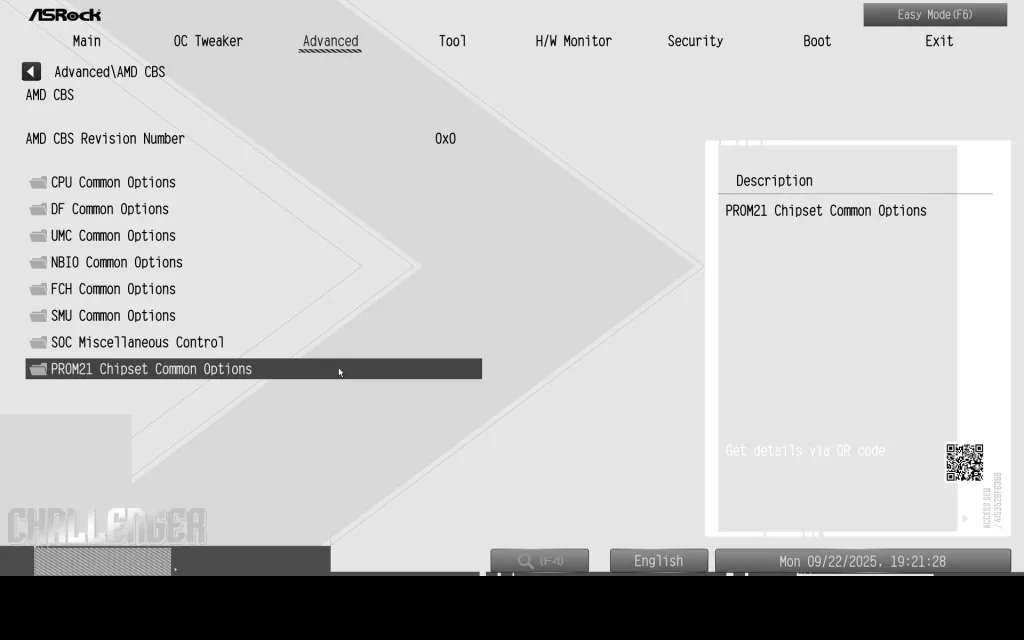
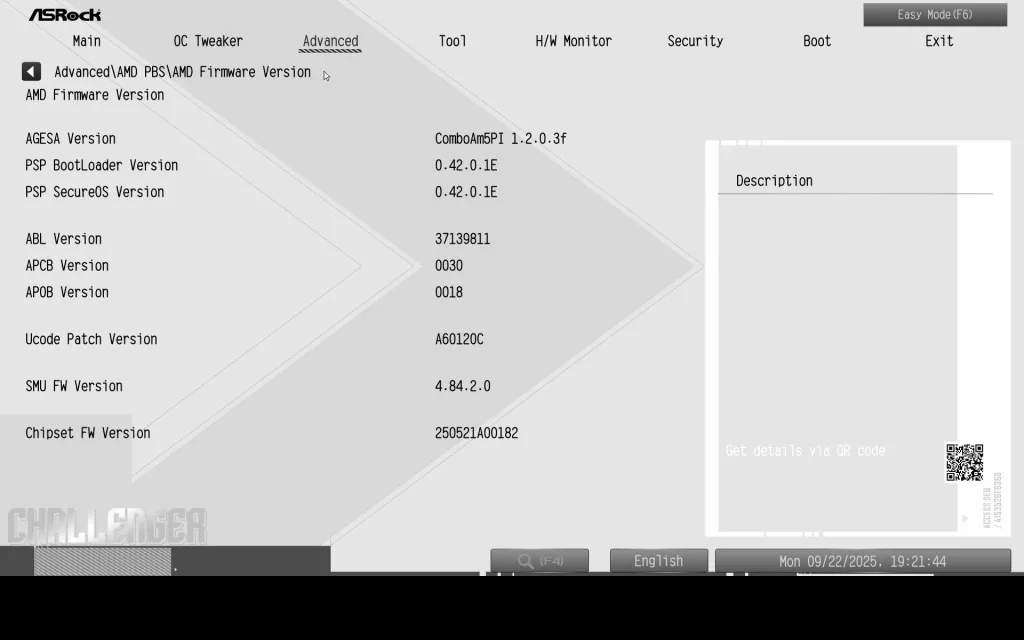
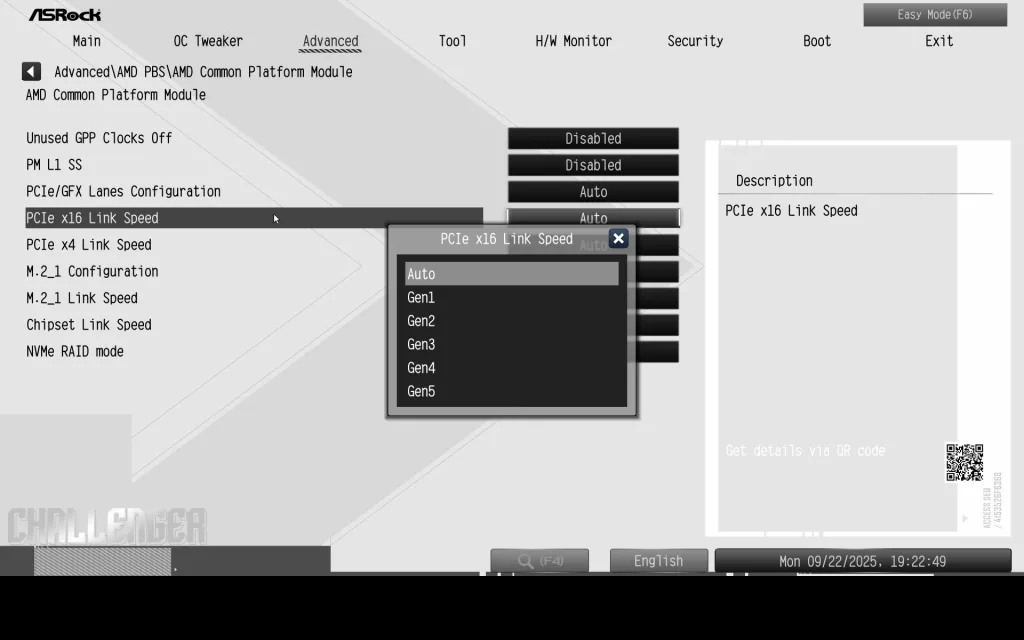
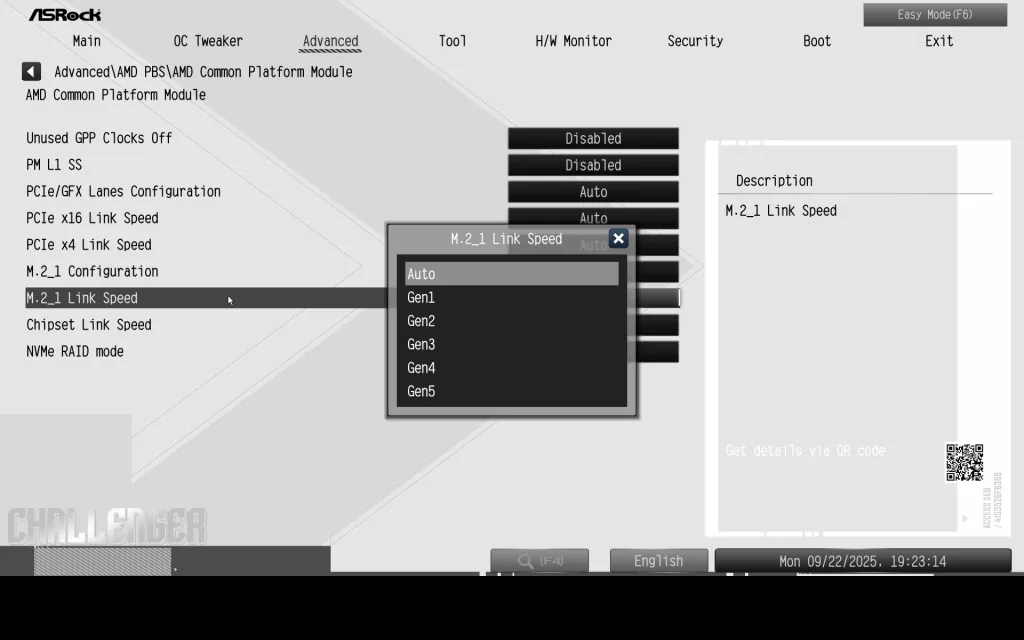
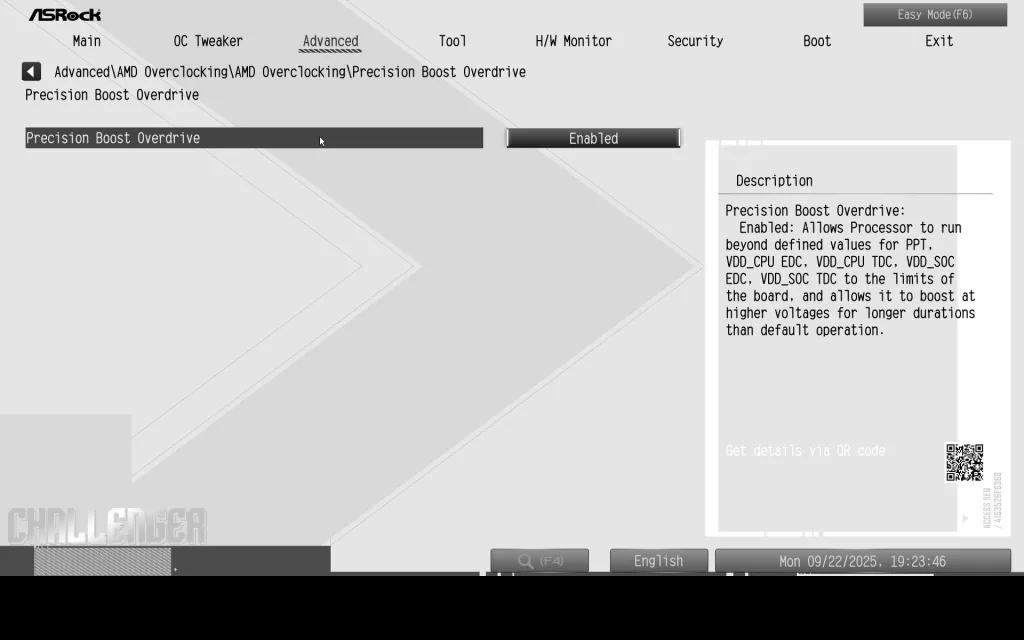
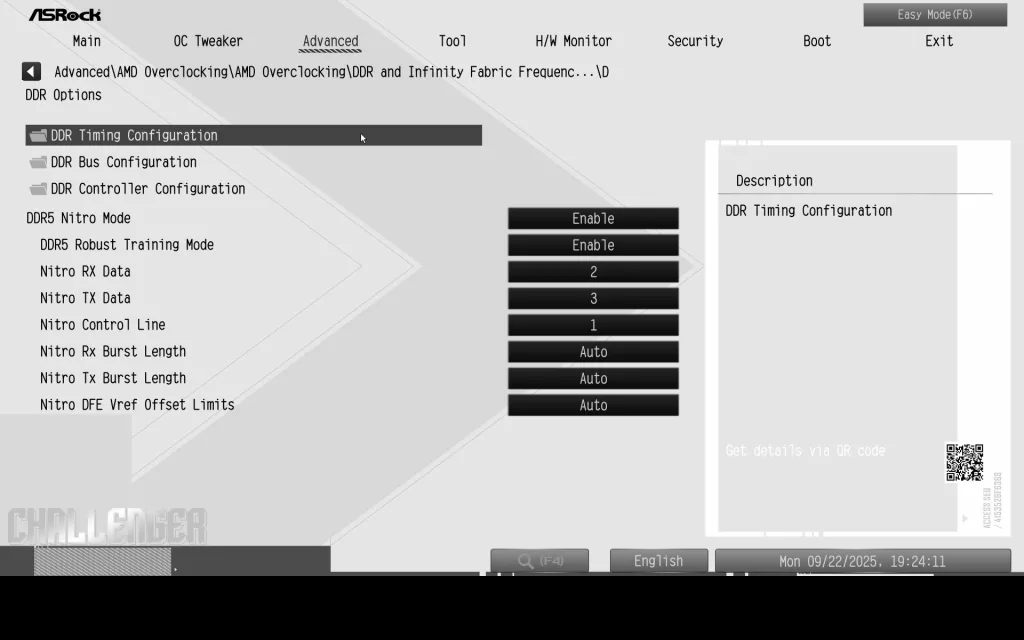
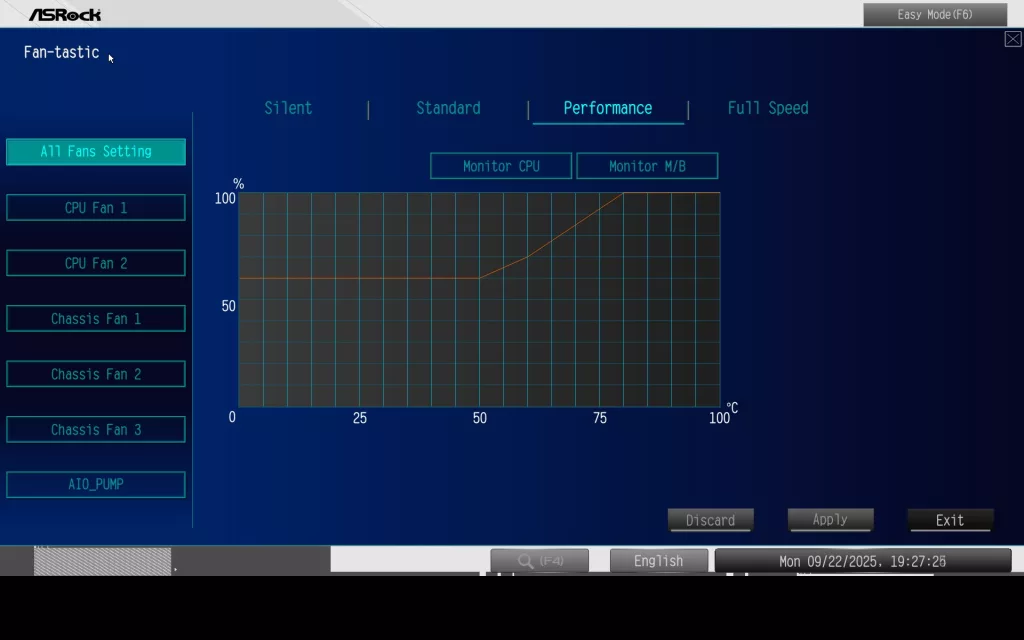
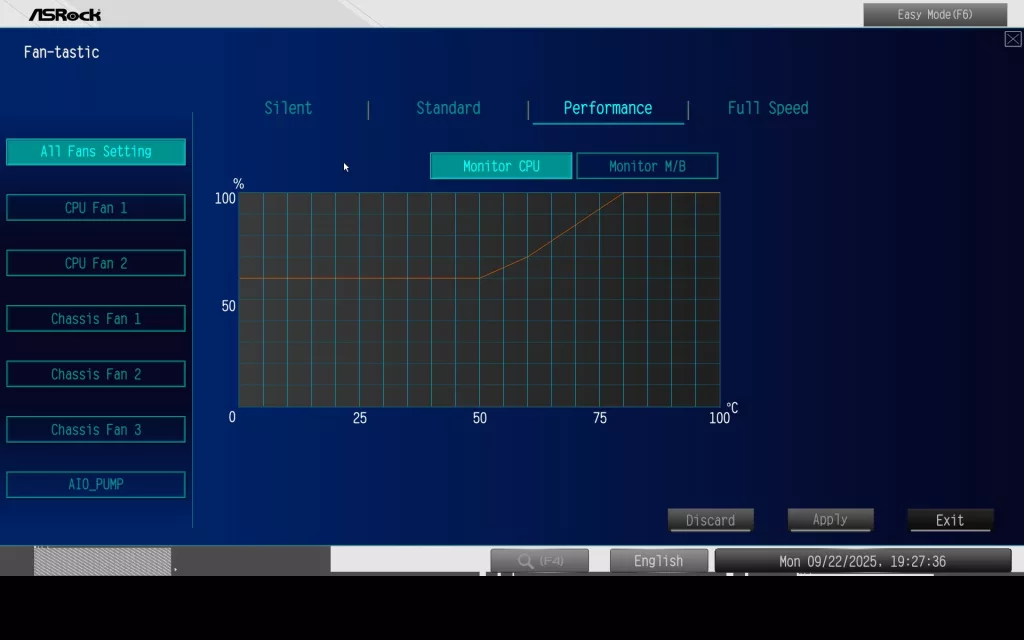
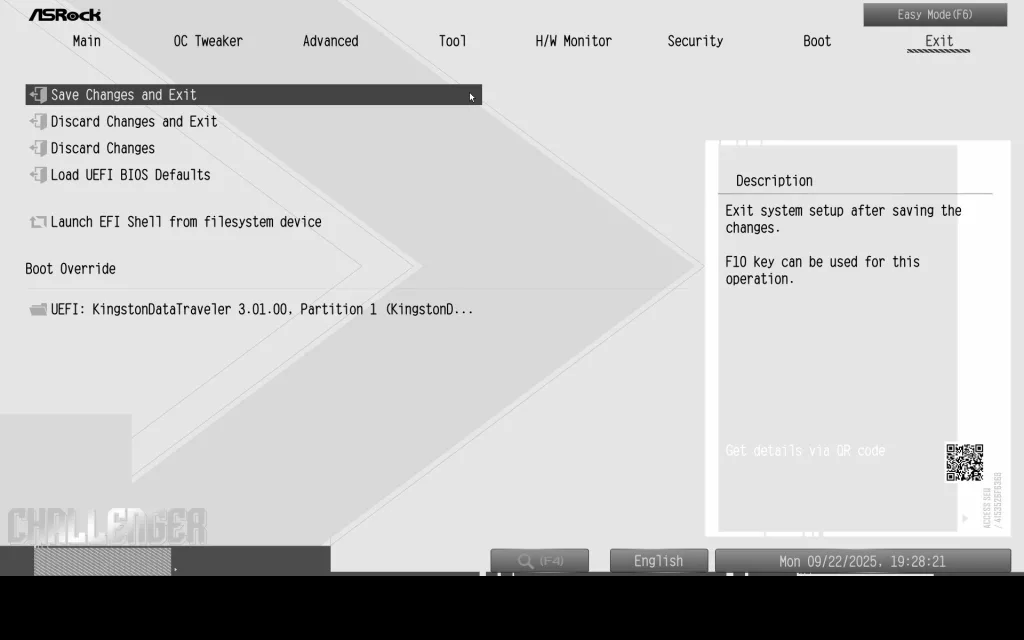
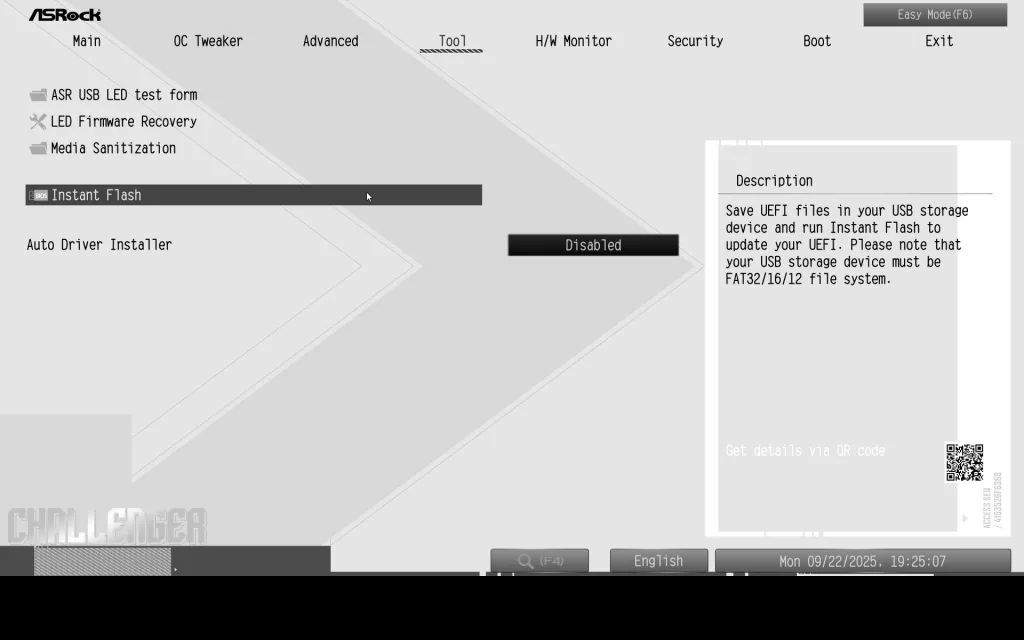
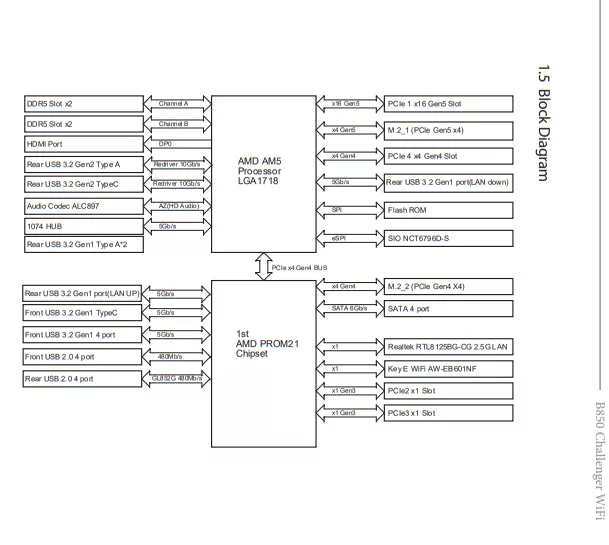
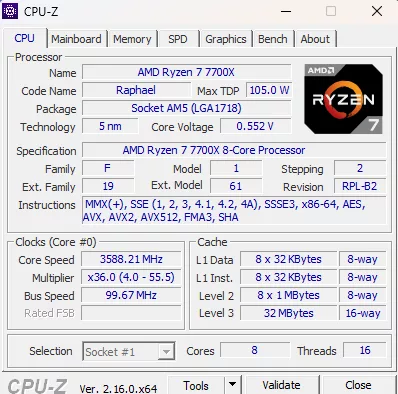
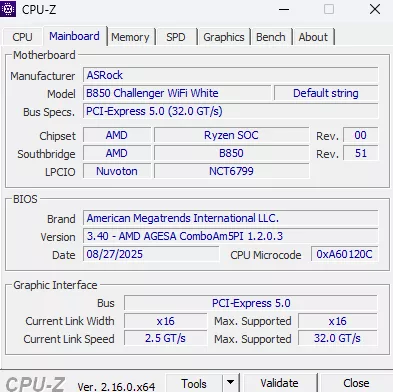

Motherboard Performance
Testing the ASRock B850 CHALLENGER WiFi WHITE was accomplished using the benchmarks below. The following components were used: AMD Ryzen 7 7700X, Corsair Vengeance DDR5 32GB at 6000MT/s (CMH32G5M2D6000C36), MSI Spatium M580 Gen5 NVME, and XFX SWIFT AMD Radeon 9070 XT White Gaming Edition graphics card. Comparison results are discussed from the recent reviews of the ASRock Phantom Gaming B850 RIPTIDE WiFi and ASRock B850 Steel Legend WiFi.
Below you will find a gallery of result screenshots from our testing protocol and a brief discussion of the results compared to other motherboards with the same or similar components.
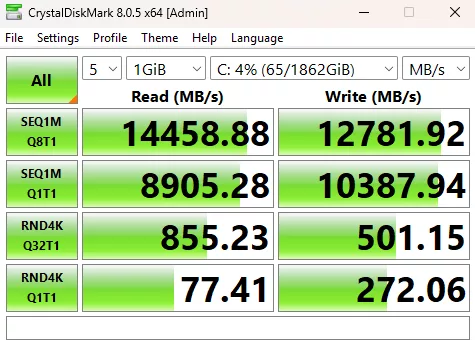
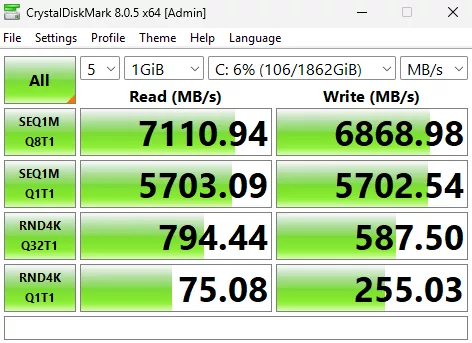
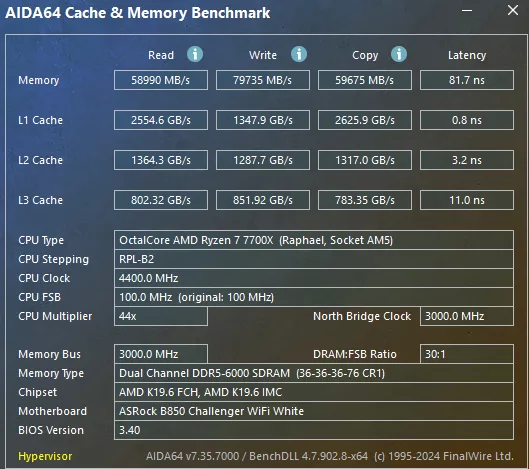
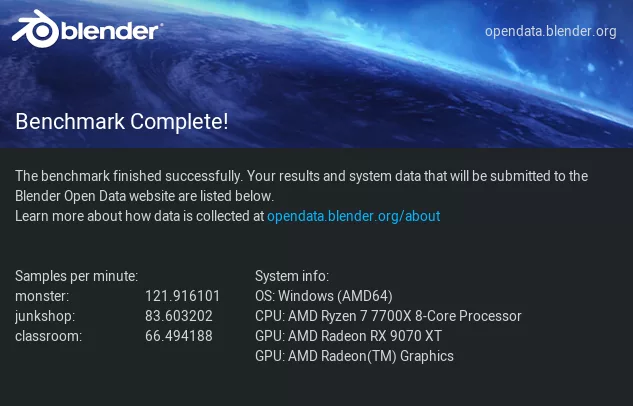
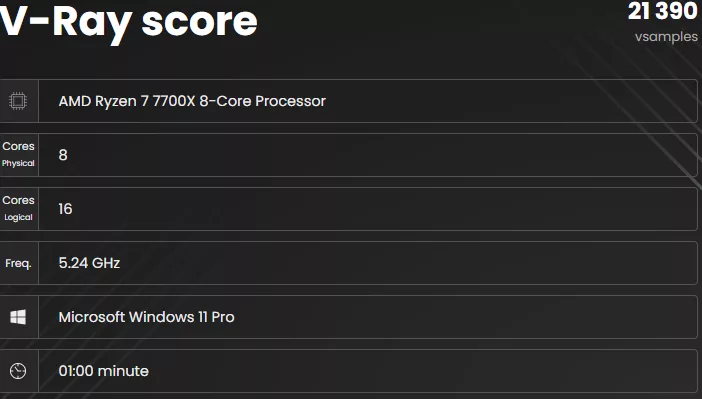
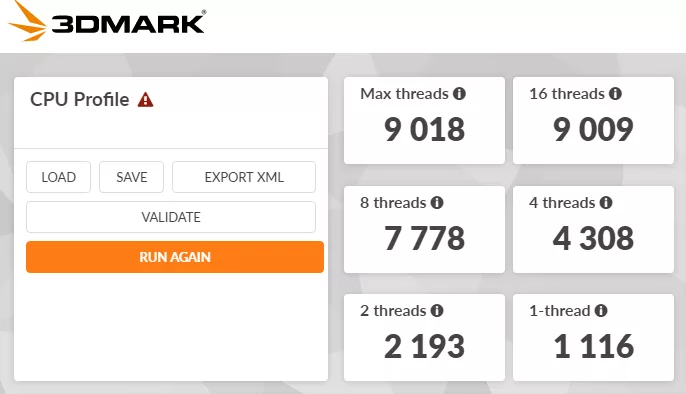
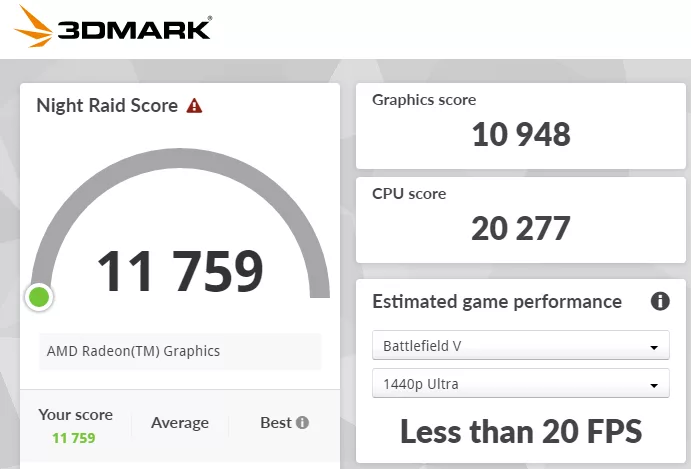
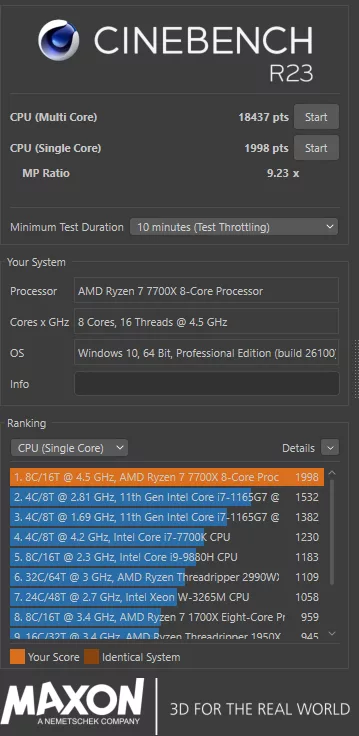
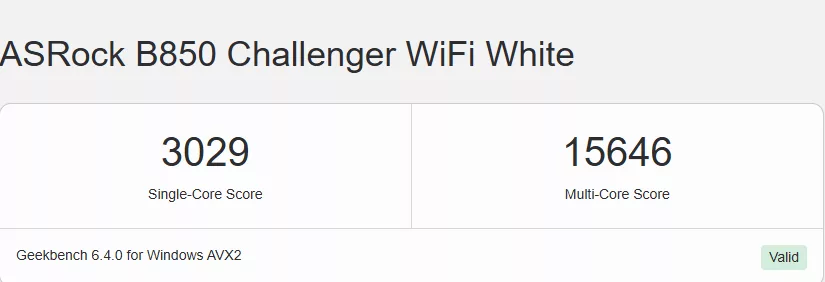

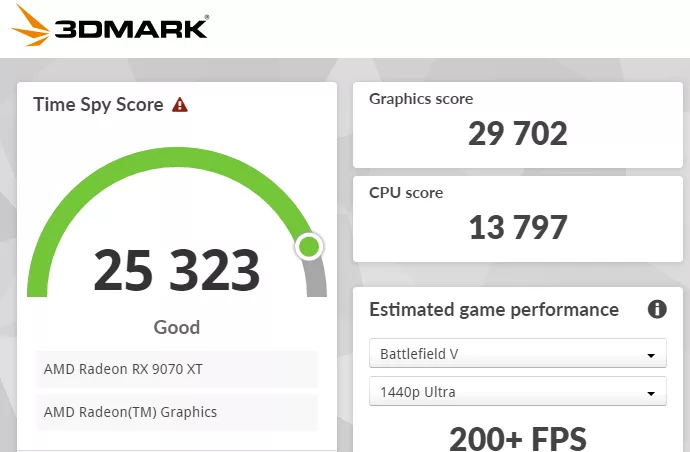
Starting with CrystalDisk, the ASRock CHALLENGER WiFi WHITE registered the same results across the Gen5 and Gen4 slots as did the prior B850 ASRock motherboards. Also in Blender, CinebenchR23, and VRay, the results were nearly identical. Likewise, with PCMark10 and 3DMark, the results were also nearly identical across all three motherboards. Geekbench is a newer arrival, so we have limited data points. The performance is very close to our GIGABYTE X870E AORUS MASTER results.
VRM Temperature
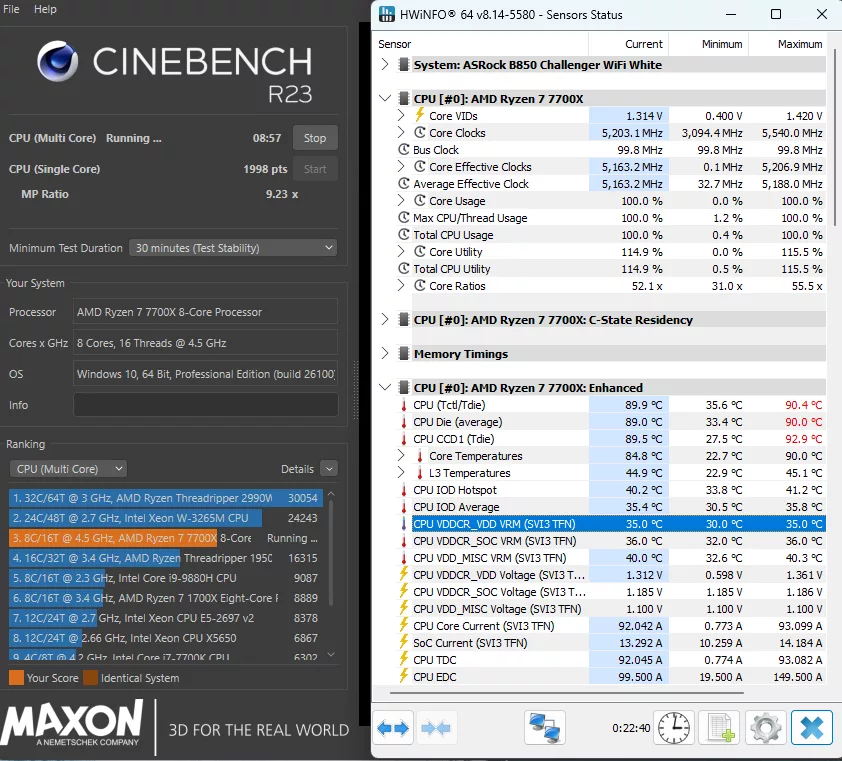
In this section, we run multicore Cinebench R23 for 20 minutes and then assess the temperature performance using HWInfo64. We can see the maximum CPU temperature registered at 90 °C while the VRM temperatures were a cool 35 °C. This result compares very well across all the AM5 motherboards we have reviewed.
Conclusion
This review has evaluated the ASRock B850 CHALLENGER WiFi WHITE. This board is the newest edition to an already packed AM5 B850 motherboard lineup from ASRock. In that, we have had the opportunity to review quite a fair number of these offerings. The ASRock B850 CHALLENGER WiFi WHITE and its partner in all black have yet to arrive in US retail outlets. This is a full-sized ATX gaming-centric motherboard detailed in all-white. It supports AM5 processors, DDR5 memory, Gen5 SSDs, and PCIe 5.0 x 16. Connectivity is only lacking in USB4, but is otherwise more than adequate.
Installation and Use
The ASRock B850 CHALLENGER WiFi WHITE had no issues with set-up or initial boot. Components installed without issue. The CPU space is adequate and uncrowded. Ram slots are double latched, and the M.2 primary has an EZ-Latch. Our MSI Spatium has a large heatsink, so we obviously had to leave the native heatsink top on the bench. You do need a screwdriver to place a secondary M.2 drive. There is only one slot, but it is well out of the way of interference from a big GPU, which is nice to see. As well, if your Gen4 SSD has a big native heatsink, you will not be able to place the motherboard’s heatsink top here either.
GPU placement is no issue, but removal is a challenge. This board has no EZ release mechanism for the GPU and little space between the primary M.2 and the primary PCIe slot. ASRock’s B850 Steel Legend motherboard has a “Graphics-Card-Lite” EZ Release latch, as you recall. It would have been nice to see the same latch placed on this motherboard as a compromise.
First boot, BIOS navigation, and Windows 11 installation were without a single hitch. Since the board came with an up-to-date BIOS, we did not have an opportunity to use the “Instant Flash”. The BIOS is very similar, if not identical, to the other B850 ASRock boards we have reviewed. All benchmarks ran without error, and cooling was in line with all the other AM5 ASRock motherboards.
Final Points
All through this review process, we couldn’t stop asking, “What exactly is the point of this motherboard?” The ASRock B850 CHALLENGER WiFi WHITE is a very capable motherboard and runs flawlessly. It’s a nicely designed all-white board, BUT it has only two M.2 slots, no RGB lighting (I never thought I’d say that), and has no performance advantage over any of the other ASRock B850 motherboards. Priced at $189, it sits directly priced, even with the ASRock B850 Steel Legend, which is likewise white (with black accents) and more feature-rich. It is more expensive than the ASRock B850 Phantom Gaming RIPTIDE, which is likewise more feature-rich (but not all white).
We do realize that prices fluctuate in the current market environment. The ASRock B850 Steel Legend was $209 at release, as was the ASRock B850 Phantom Gaming RIPTIDE, but as is said, “timing is everything.” At this writing, we could only see an advantage to the B850 CHALLENGER if you absolutely had to have an all-white motherboard for a specific build. Certainly, this is a capable board, but without looking very far, you can find a more feature-rich motherboard from ASRock at the same or lower price point. At least, ASRock can be guilty of having too many choices in their B850 lineup, which provides loads of options for different interests and use cases.
